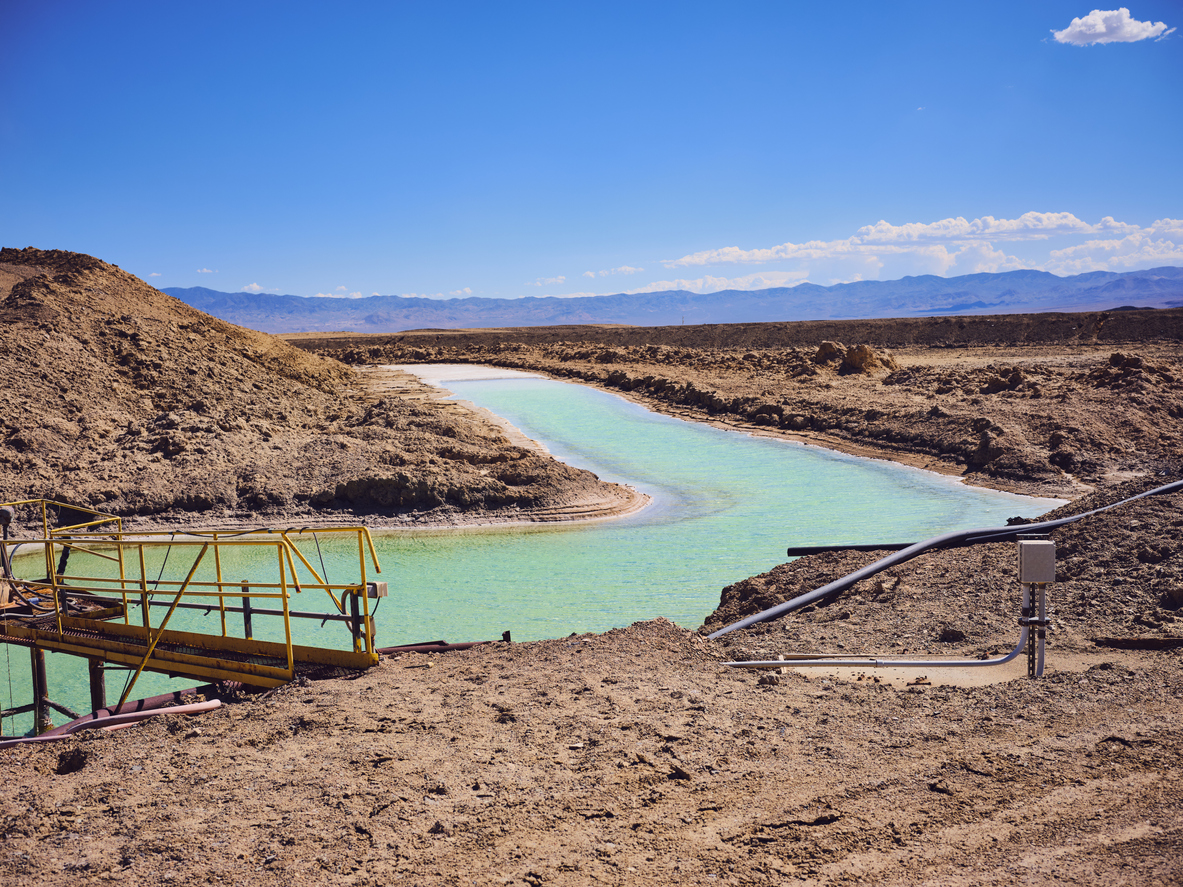
As part of their plan to create a possible lithium production hub in the Abitibi region of Quebec, Australia’s Piedmont Lithium (ASX: PLL) and its 19%-owned Sayona Mining (ASX: SYA) have completed the acquisition of Canada’s North American Lithium. (NAL)
The companies said they will be merging Sayona’s Authier and Tansim projects in Quebec and NAL, which stopped production at its mine in 2019. “They noted that technical studies for the future restart of NAL’s spodumene concentrate operations were underway.”
The companies have also introduced studies for the manufacturing of lithium chemicals in Quebec, which could result in the province being a “key lithium hydroxide production centre,” especially with how much they stand behind the green movement and the proximity to major US and European electric vehicle (EV) markets.
Keith D. Phillips, President and Chief Executive Officer of Piedmont Lithium commented:
“We are very pleased to have partnered with Sayona in the consolidation of the spodumene resources in the Abitibi region of Québec, with Sayona Québec now comprising a large Canadian lithium resource base.”
“Importantly, North American Lithium is a past-producing business with $400mm of investment over the past decade. NAL’s concentrate operations are amenable to a relatively rapid restart and we will work with Sayona to develop suitable plans in that regard.”
The move to kick off these lithium studies comes after a $45 million placement and $20 million share purchase plan, both of which were heavily oversubscribed. 80% of the world’s EV batteries are currently produced in Japan, South Korea, and China.
Phillips continued saying “We are also evaluating a variety of options for production of lithium hydroxide in Québec and will update the market further as our plans crystallize.”
Canadian Hub?
The acquisition also comes after a report suggesting that Canada has a ““once-in-generation” opportunity to establish itself as a major player in the global battery sector.”
“The timing is perfect, and we look forward to realizing this opportunity, working closely with our partner, Piedmont and all other key stakeholders, including Investissement Québec, as we help drive Québec’s clean energy future,” Sayona Mining managing director, Brett Lynch, said in the statement.
Piedmont Lithium is also currently developing its eponymous lithium project in North Carolina, which is set to become one of the largest sources of EV batteries’ raw material.
“Piedmont intends to become North America’s leading lithium hydroxide producer and our Québec investments are an ideal complement to our flagship Carolina Lithium Project in Gaston County, North Carolina,” Phillips concluded.
However, earlier this month plans were set back and the company had to slow down production because the state had issued a 60-day moratorium on new approvals for mining and quarrying activities.
The above references an opinion and is for information purposes only. It is not intended to be investment advice. Seek a licensed professional for investment advice. The author is not an insider or shareholder of any of the companies mentioned above.
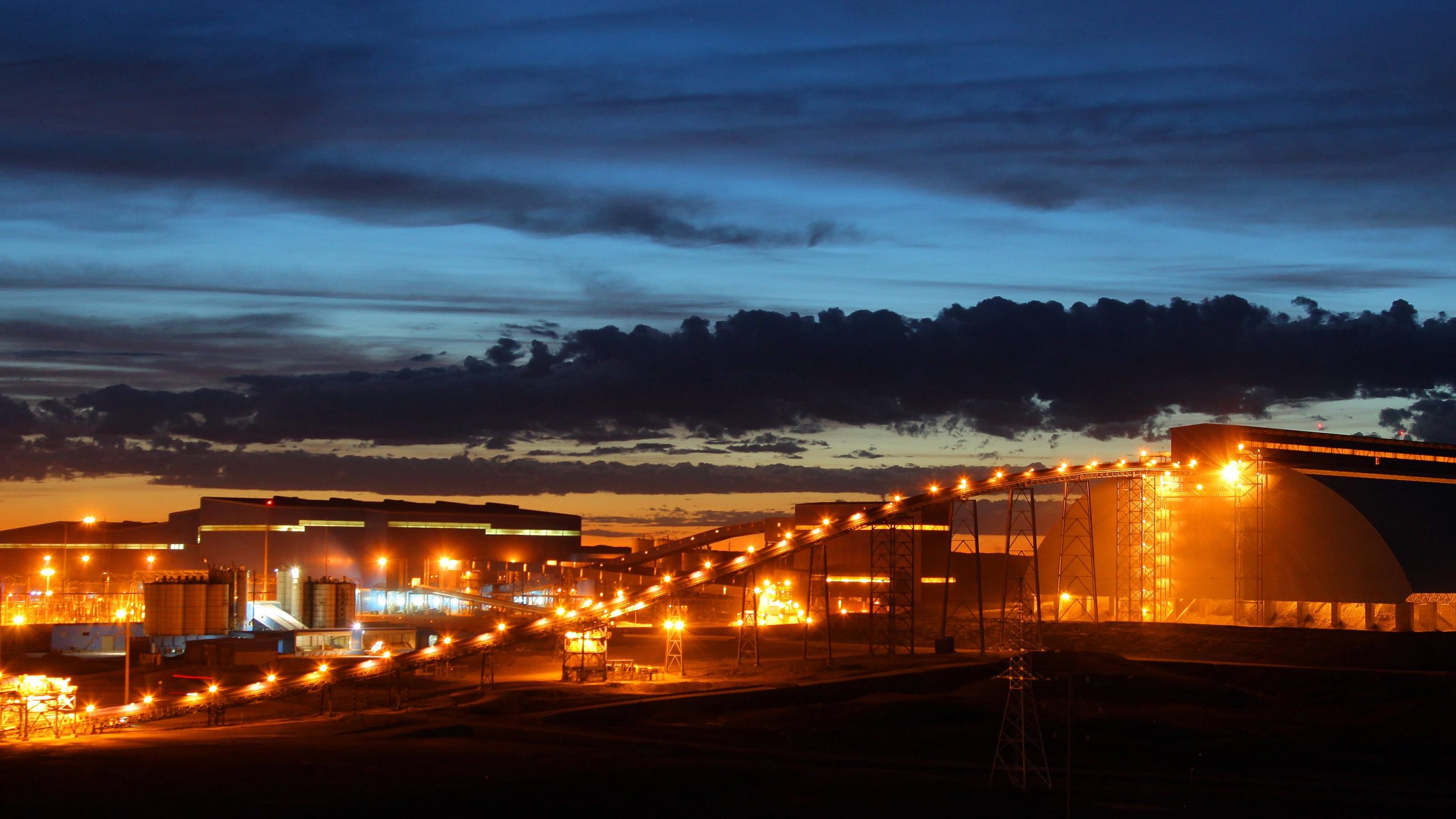
The global miner Rio Tinto (ASX:RIO)(LON:RIO)(NYSE:RIO) is said to be looking to make an agreement with the Mongolian government by cutting rates on the loans given to them to fund its share of construction costs for the Oyu Tolgoi copper gold mine in the Gobi Desert.
Bold Baatar, the head of Rio’s copper division, and Steve Thibeault, head of Rio’s Turquoise Hill Resources (TSX:TRQ)(NYSE:TRQ) addressed Mongolia’s Prime Minister L Oyun-Erdene in a letter cited by Financial Times. It explained they are looking to speed up development and returns from the $6.75B underground expansion of the giant mine, solve several regulatory and budgetary issues and determine a long-term power agreement for Oyu Tolgoi in exchange for the cuts, the Financial Times reported on Monday.
Turquoise Hill owns 66% of Oyu Tolgoi and is an international mining company “focused on the operation and further development of the Oyu Tolgoi copper-gold mine in southern Mongolia.” Rio has a 50.8% stake and the rest is held by the Mongolian government.
This offer comes after an independent report that rejected Rio Tinto’s reasoning for the project’s delays and cost overruns. The cost of Oyu Tolgoi’s underground section was originally estimated around $5.35 billion back in 2015, but a new definitive estimate announced in December puts the cost of the new mine level around $6.75 billion.
The first production which was planned to start in late 2020 was pushed back until October 2022. Rio blamed not ideal geological conditions as the main cause for the cost and starting delay, but the independent report published earlier this month had raised “certain questions in relation to the project management process,” and suggests it was rather caused by mismanagement on behalf of the miner.
In the first months of 2021, Rio and Turquoise Hill were stuck at a standstill over the funding to expand the huge mine. This caused Turquoise Hill’s CEO Ulf Quellmann of three years to take Rio to arbitration and quit his job shortly after doing so.
An agreement was finally reached in April, figuring out the $2.3 billion still needed to complete the underground project and “replaces deals set up under a memorandum of understanding from last September.”
Oyu Tolgoi is Rio Tinto’s main copper growth project. The company was originally founded in 1873 on the banks of the Rio Tinto river in Andalusia, Spain, and operate various mines, smelters and refineries in 35 different countries. Rio has 60 projects and operations to date and once the Oyu Tolgoi is completed, the mine’s underground section will lift production from 125,000–150,000 tonnes in 2019 to 560,000 tonnes at the highest output, which is now expected by 2025 at the earliest. This would make it the biggest new copper mine to come on stream in several years.
The above references an opinion and is for information purposes only. It is not intended to be investment advice. Seek a licensed professional for investment advice. The author is not an insider or shareholder of any of the companies mentioned above.
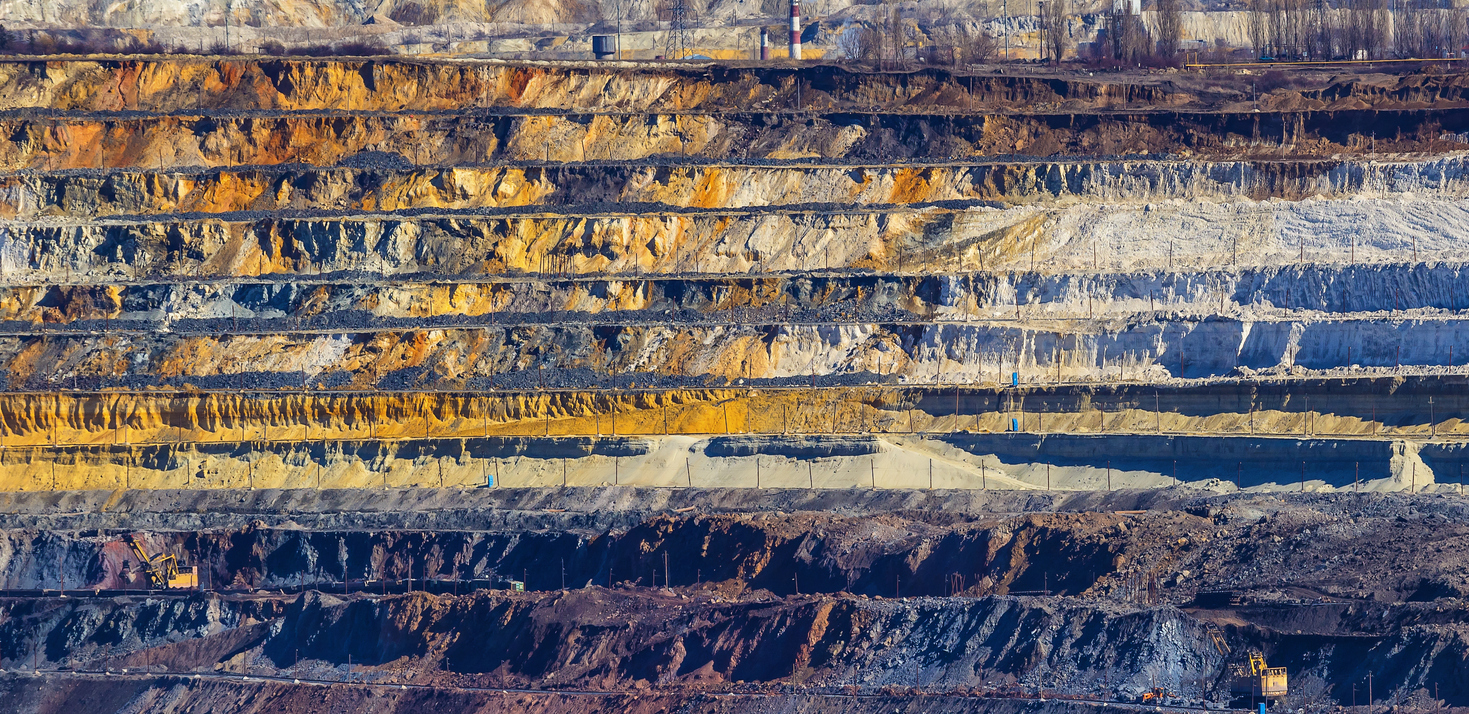
Trillium Gold (TSXV:TGM) (OTCQX:TGLDF) (FRA:0702) announced today that it signed an agreement to acquire the thirteen contiguous patented mineral claims at the “Willis Property”. The Willis Property combines the thirteen claims for a total of 229 hectares, which are situated southwest of and contiguous to Trillium Gold’s Newman Todd (NT) Property in Todd Township. The properties are both found in the Red Lake Mining District in Ontario.
This is a big step for Trillium as it has acquired a 100% interest in the Willis Property upon the completion of the transaction. Russell Star, CEO of Trillium Gold commented: “The Willis Property represents an important addition to Trillium’s property package in the western Red Lake area. It covers both the southwest extension of the NT Zone as well as other ground proven to be highly prospective for gold with visible gold noted in outcrop sampling. As with the NT Property, the Willis Property displays many similarities to the major gold mines to the east: namely rock types, structures, mineralization, and alteration. Despite these attributes, the property has seen very little exploration since the 1930s and is one of the few remaining unexplored properties in the Red Lake greenstone belt.”
Newman Todd
While the new acquisition is sure to expand the company’s exploration plans, the Newman Todd (NT) Property is the company’s flagship asset and has been the focus of the company’s efforts thus far. Previous exploration at the site suggested over 20 individual high-grade zones along the current strike length of the northeast-trending Newman Todd Structure (NTS). This could be traced for 2.2km+ along strike, with a network of gold-rich veins.
The property was only drilled sparsely before Trillium Gold took over, and was only drilled and tested at depths below 400 metres. With mineralization open along strike and depth, and possibly also in the postulated parallel features, the project has some of the biggest potential for the company’s portfolio.
The history of the property goes way back, with early exploration beginning in the 1930s on the southwest extension of the property, and then again in the 1940s. Due to the mining practices at the time, there is very little drill data from those periods. There are some reports about trenching, drilling, and bulk sampling, but the property has largely been a blank slate for Trillium.
New Goals
With the new property acquisition, Trillium has its work cut out for it. With the properties sharing similar potential and the company extending the NT Zone with this purchase, Willis Property could be the land needed to make the company’s work in the western Red Lake area profitable. The total property package for Willis was acquired for $420,000, and 400,000 common shares of the company. The property is also subject to a 2% net smelter returns (NSR) royalty.
The above references an opinion and is for information purposes only. It is not intended to be investment advice. Seek a licensed professional for investment advice. The author is not an insider or shareholder of any of the companies mentioned above.

The Australian Administration is planning to introduce new reforms to help the Northern Territory’s mining industry grow and expand by creating a new bill. This will be The Aboriginal Land Rights (Northern Territory) Amendment (Economic Empowerment) Bill 2021 that will assist in reducing red tape for current and any future mining enterprises.
The main point of the new bill is the establishment of the NT Aboriginal Investment Corporation (NTAIC), which will benefit First Nations enterprises through investing royalty equivalent funds from mining on Aboriginal lands.
A $500 million initial investment will be made through the NTAIC, followed by $60 million per year for the first three years to help “support projects that deliver local jobs, business and wealth creation,” according to the Minerals Council of Australia (MCA.)
NTAIC will also receive additional ongoing funding so that future decisions will be made closer to the people it actually affects, making this establishment more beneficial for everyone.
Ken Wyatt the Minister for Indigenous Australians said the bill will be a boon both bureaucratically and economically for NT Indigenous mining endeavors.
He said “The reforms … reduce tape, by making mining and exploration license processes easier while still preserving Traditional Owners’ rights, and provide greater certainty by strengthening township leasing arrangements.”
The new bill “includes measures to simplify processes, support community engagement and reinforce governance arrangements for native title Prescribed Body Corporations (PBCs), key partners for the minerals industry.”
First Nations landholders and communities are core partners in mining’s social and economic contribution to Australia.
According to the MCA, more than 60 percent of operating mines are located near Aboriginal and Torres Strait Islander communities. The mining workforce also has the highest proportion of Indigenous employees of any industry.
Their most recent media coverage through The Australian reads “Indigenous mining jobs have more than doubled since 2006 and nearly 20 percent of Indigenous mining employees are women. Entrepreneurial Indigenous businesses have also established themselves as a critical part of the mining supply chain and provide opportunities broader than a single project, adding to the sustainability of remote communities.”
Wyatt also believes this new reform will create even more jobs and opportunities as a result of the bill and growing Aboriginal economies. “ A conservative estimate shows a boost to Gross Regional Product in the NT to be $60 million each and every year out to 2029-30,” he said.
Earlier in July, The MCA had released a statement announcing the implementation of the Towards Sustainable Mining (TSM), a new work program, in which “heritage protection, engagement, and benefits-sharing will be adapted for Australia in collaboration with First Nations organisations.”
Wyatt also added that “More than 47 percent of the Northern Territory is now Aboriginal land and Aboriginal Territorians, along with Indigenous peoples all over Australia, are seeking new ways to activate the social and economic potential that comes from this.”
The above references an opinion and is for information purposes only. It is not intended to be investment advice. Seek a licensed professional for investment advice. The author is not an insider or shareholder of any of the companies mentioned above.
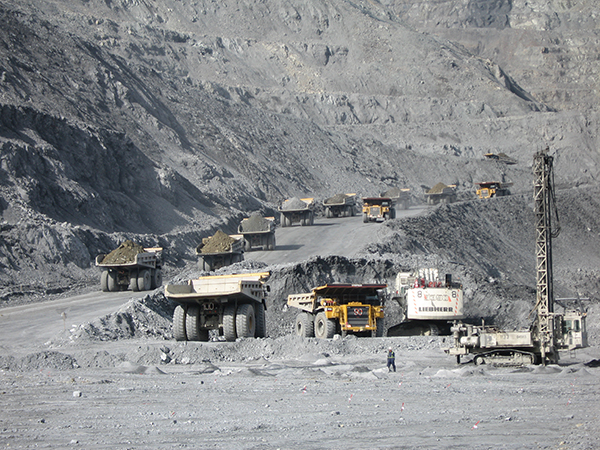
In relation to the May seizure of the Canadian company’s Kumtor gold mine, two sectors of Canada’s Centerra Gold (TSX: CG) have filed a motion in a US Bankruptcy Court seeking penalties of $1 million a day against the Kyrgyzstan government.
The company’s Kumtor Gold Company (KGC) and Kumtor Operating Company CJSC (KOC) submitted the motion to the US Bankruptcy Court for the Southern District of New York.
The motion claims that the Kyrgyz government “blatantly and continuously” violates the court’s orders and has “continued and intensified” its efforts to deprive KGC and KOC of the protections afforded to them under Chapter 11 of the US Bankruptcy Code.
Bankruptcy proceedings following the nationalization of the miner’s Kumtor gold mine by the former Soviet republic were commenced by KGC and KOC in May, Centerra said. In the same month, the government seized control of Kyrgyzstan’s most significant foreign investment project in a move challenged by Centerra Gold through international arbitration.
The motion is also seeking the Kyrgyz government’s efforts to dismiss the case, and claims there have been “continued and willful” violations of the automatic stay given by the Bankruptcy Court.
These violations include “continued Kyrgyz court proceedings that seek to change KGC and KOC’s corporate resolutions illegally; the maintenance of the preliminary injunction barring KGC and KOC legal counsel and various individuals from participating in Kyrgyz court proceedings; the extension of the mandate of the so-called temporary manager; the termination of all KGC and KOC contracts with the Kyrgyz government and its related entities; and, laying the groundwork for the conversion of the Kyrgyz government’s environmental and tax claims against the KGC and KOC into equity with the effect of giving the Kyrgyz government complete ownership and control over the KGC and KOC.”
It was also reported earlier this month that the Kyrgyz state security service and prosecutors had gathered enough evidence to continue on with removing Centerra from the Kumtor Gold mine.
This follows an investigation into “possible corruption” in a deal that gave Centerra control and “subsequent amendments” over the country’s biggest gold mine.
A spokesperson for Centerra explained to Reuters, an author for mining.com, that “While we continue to pursue all measures necessary to protect the company’s rights related to the Kumtor mine, in arbitration and in other legal proceedings, the company has consistently stated that it remains willing and available to engage with the Kyrgyz government in a constructive dialogue on the matters it considers to be the subject of dispute.”
Centerra’s CEO, Scott Perry said earlier this month that following the Kyrgyzstan government’s seizure of the Kumtor mine, Centerra remains “financially strong” as its other operations have been performing well.
Centerra currently owns three mines including the Kumtor mine in the Kyrgyz Republic, along with the Mount Milligan Mine in Canada, and the Öksüt Mine in Turkey.
Perry also explained in a public letter to the people of the Kyrgyz Republic that “Centerra Gold recently announced plans to invest an additional US$2 billion to extend the life of the Kumtor Mine once again. That is all on hold now because of what has happened.”
Centerra does deny the corruption allegations, and the motion will be presented to the Bankruptcy court on September 15 from KOC and KGC attorneys.
The above references an opinion and is for information purposes only. It is not intended to be investment advice. Seek a licensed professional for investment advice. The author is not an insider or shareholder of any of the companies mentioned above.

The price of Iron ore recently jumped 7% on Tuesday in an effort to keep up with expected economic growth and boosted demand for steel. Additional support from the Chinese government is also expected to help the recovery.
According to Fastmarkets MB, benchmark 62% Fe fines imported into Northern China were changing hands for $146.13 a tonne, up 7.3% from Monday’s closing.
Iron ore is rocks and minerals that are made up of metallic metals that can be extracted and used for a variety of different purposes. The ores can range in colors from red, orange, deep purple, grey and more, and are usually rich in iron oxides. Common forms of iron that are usually found within iron ores include hematite, magnetite, goethite, limonite, and more.
Iron ore is the primary source of iron for all iron and steel industries, making it essential for the production of steel. You need roughly 1.5 tonnes of iron ore to make about one tonne of steel. Since China is by far the world’s largest steel producer, they use more iron ore than any other country.
After months of lockdown from the global COVID-19 pandemic, China decided to ramp up construction for apartments and other infrastructure, which requires a lot of steel. However, the demand is starting to fall as the Chinese economy is slowing down in general, which includes building homes and other structures.
“The infrastructure and property sectors account for 20-25% and 25-30% of China’s steel demand respectively,” noted Commonwealth Bank commodities analyst Vivek Dhar.
“We think part of the weakness in China’s steel demand is linked to widespread restrictions to contain China’s latest COVID-19 outbreak.”
In regards to the Chinese economy slowing down, “China’s central bank chief vowed to stabilize the supply of credit and boost the amount of money supporting smaller businesses and the real economy after both credit and economic growth slowed in July.”
Erik Hedborg, principal analyst at CRU Group said “people (in China) are hoping for some further stimulus targeting the infrastructure sector, as real estate and manufacturing are looking bleak.”
“In the rest of the world, we are seeing steel production stabilizing at levels below pre-pandemic levels.”
The future of iron ore prices and production may be uncertain in the near term, as the global pandemic numbers begin to rise again in some countries. However, Vivek Dhar is “optimistic that Chinese authorities might soften their targets, as steel shortages start pushing up prices and therefore construction costs.”
“We think policymakers will eventually relax steel output restrictions when steel prices increase because the steel output cuts prove to be more severe than any slowdown in China’s steel demand,” he wrote.
The above references an opinion and is for information purposes only. It is not intended to be investment advice. Seek a licensed professional for investment advice. The author is not an insider or shareholder of any of the companies mentioned above.
As copper prices began to rapidly rise earlier in the year, competition between the biggest mining companies has been extra intense this year. Between copper being a vital metal as we move forward with the green energy transition and the disruptions due to the Covid-19 pandemic, the demand for copper has only grown.
The top 10 copper mining companies were just released and produce over half of the world’s copper output, with most of the global copper supply produced by giant mining companies.
Despite the impact from the pandemic, worldwide copper production still surpassed the 20-million-tonne mark in 2020.
Let’s take a look at the top three companies and what they accomplished in 2020. Here are the top 10 copper mining companies:
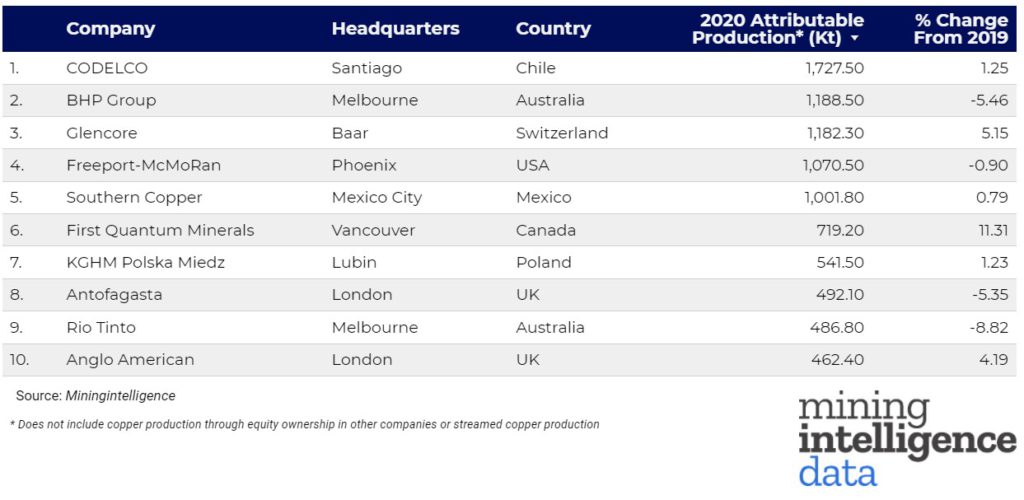
Codelco
Chile’s Codelco was by far the biggest copper mining company in 2020, producing 1727.50 Kt, as they implemented a four step plan to help overcome operational challenges and continue copper production.
Codelco recently broke ground at their Salvador copper mine, which is the Rajo Inca project. This is a $1.4 billion dollar expansion of the copper mine, and is expected to increase the operating life of the mine by around 47 years and increase output by 50%. This salvador mine has been in operation since 1959 and the expansion will change it from an underground mine to an open pit. Full production at the new section is set to begin in the first half of 2023, and it is expected to yield 90,000 tonnes per year.
BHP Group (NYSE:BHP)
Australia’s BHP Group was the second largest copper producing company in 2020, producing 1188.50 Kt. According to the BHP group, this is enough copper to build over 420,000 wind turbines. The Company did experience a disruption in production due to the pandemic, resulting in a shutdown for a period of time.
In recent news, BHP Group just approved a multi billion dollar investment for Jansen Potash mine in Saskatchewan. According to the provincial government, $5 billion has already been spent on production and another 7.5 billion will be used to complete the new operation. This is said to be the largest investment in the history of the province of Saskatchewan.
Glencore (OTC:GLNCY)
The third largest copper mining company in 2020 was Switzerland’s company Glencore, producing 1182.30 Kt of copper in 2020. Glencore operates more than 180 sites and offices in 35 different countries, which means the impact of Covid-19 varied depending on the country. With all of their precautions in place, they managed to be in the top three copper mining companies in 2020.
Glencore recently signed a partnership with Britishvolt for a long term supply of cobalt. According to Glencore, “The deal highlights the need for strategic partnerships between raw material and battery producers on the roadmap to net-zero; with Environmental, Social and Governance a growing focus of investors.”
Overall, the price of copper has and is continuing to rise at a fast rate, especially due to the green energy movement. Investing in copper mining companies is a good way to benefit from that price, and helps stay on top of the most current copper trends.
The above references an opinion and is for information purposes only. It is not intended to be investment advice. Seek a licensed professional for investment advice. The author is not an insider or shareholder of any of the companies mentioned above.
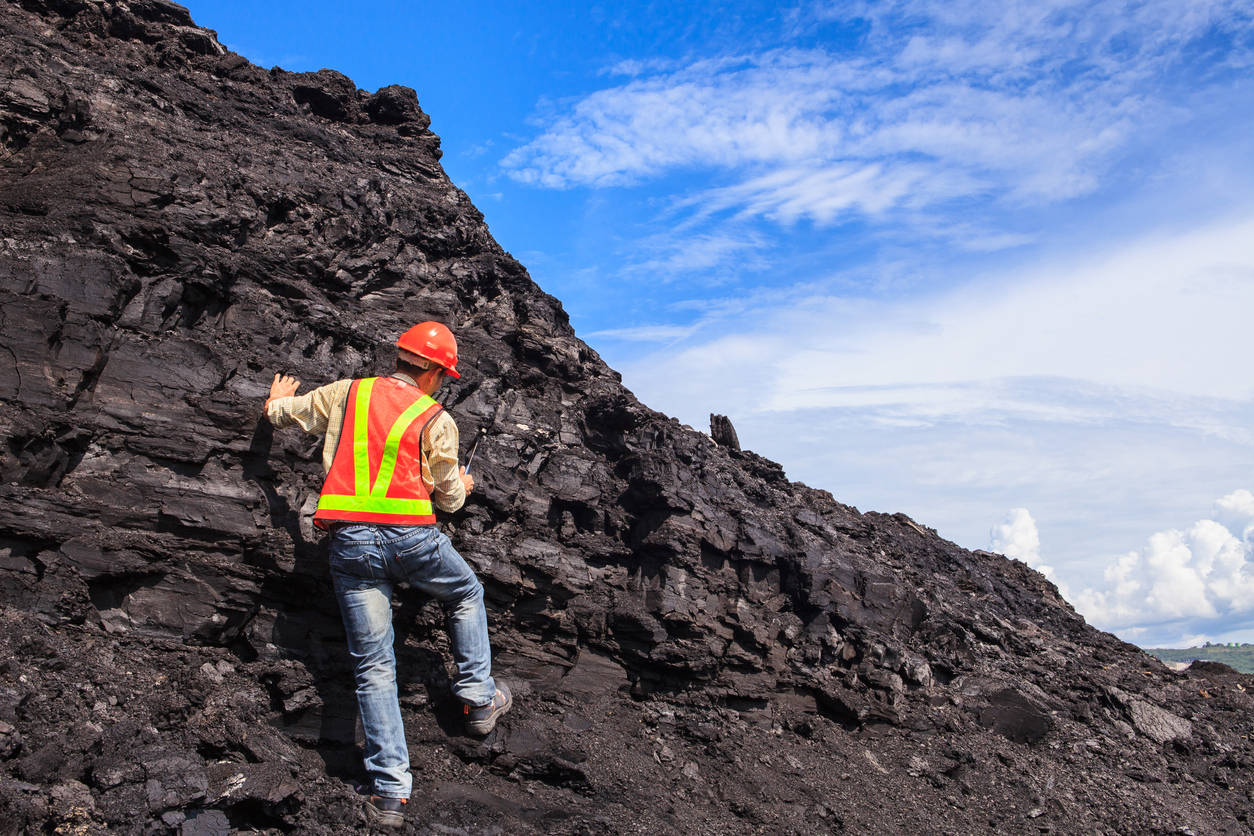
Drinking beers on a Friday night with your mates at a local pub typically does not turn into a night of discussing job offers and high-paying available positions. But for some soon-to-be engineering mining graduates in Western Australia, that is exactly what is happening due to a current shortage of mining skills.
For many students studying a variety of fields at universities across the country, finding a job post-graduation in an uncertain, pandemic hit economy is going to be an extreme challenge.
The soon-to-be graduates of Curtin University’s century-old WA School of Mines in Kalgoorlie-Boulder, are not exactly having those same job-hunting issues. Mining companies are using any and every opportunity they can to try and recruit up-and-coming mining graduates to join their team.
Interviews with some of the engineering mining students with ABC easily show how many job offers these students can receive while out for a night of drinking in the town.
Engineering graduates in demand
Ryan Stewart is a fourth-year mining engineering student at the Kalgoorlie campus and already has six job offers; he is one of just 25 engineering students and knows he is in demand.
“The mining industry is thirsty for us,” Mr. Stewart said.
He has chosen to work for South African mining giant Gold Fields on a starting salary of more than $110,000 a year while working an eight days on, six days off roster. This decision comes after declining further interviews at the biggest mining company in the world, BHP, telling them that he “wanted to face more diverse and challenging work than he would receive at the company.”
“We’re rolling out of university to six-figures,” Mr. Stewart said.
Mining companies are evening pay the students’ bar tabs at the School of Mines Social club in hopes to recruit more workers. Mr. Stewart and another soon-to-be graduate Jarvis de Lacy say the amount of free alcohol and food they get is ‘crazy’.
According to the Australian Bureau of Statistics, the median income for an Australian with a postgraduate degree in 2020 was $83,200.
Gold Fields said they have a goal of recruiting up to 35 graduates this year for engineering, metallurgy, and geotechnical positions. They also recently gave their WA workforce a raise of 6 cents earlier in the year.
Unconventional recruiting methods
Mining students told the ABC that not only are companies competing for them using starting salaries but through persuasion and alcohol at social events. This includes the after-parties at Kalgoorlie’s famous Diggers and Dealers Mining Forum.
“I was drunk having a chat and they [company representatives] gave me a dart and they were trying to convince me to come work for them,” geology student Harry Taverner said.
Taverner says that although the companies are doing a nice thing by presenting these opportunities, the amount of positions that are currently available in the mining industry makes it easy to not be interested in every one that comes your way.
According to an Australian job search site, Seek, there are currently over 500 available mining job opportunities in a wide variety of positions just in the West Kalgoorlie WA region alone.
According to ABC Goldfields: Elsa Silberstein, at just 20 years old, Maria Sullivan is one of only three female mining engineering students in her cohort.
She gets bombarded with offers to work at university social events, where companies put on a bar tab every Thursday and Friday night.
“It’s crazy, people get offered jobs because they won a game of pool,” Ms. Sullivan said.
Ms. Sullivan was recruited in her first year of studying for her degree by Fortescue Metals Group, which is chaired by billionaire mining magnate Andrew Forrest. She explained that companies who do not hire students early pay for it later on since they have to offer higher starting salaries.
“If you don’t have a graduate locked in by their second year, you have to buy them from other companies,” Ms. Sullivan said.
“You have to get us quick otherwise you’ll be spending through the nose.”
According to WA’s Chamber of Minerals and Energy (CME), the State’s mining and resources sector could need as many as 40,000 additional workers by mid-2023.
The above references an opinion and is for information purposes only. It is not intended to be investment advice. Seek a licensed professional for investment advice. The author is not an insider or shareholder of any of the companies mentioned above.

Last Thursday August 19, Collective Mining (TSXV:CNL) announced it had appointed Ana Milena Vasquez as its Executive Vice President. Ana is one of the key group of executives that form the framework for Collective Mining, a group of former executives from the Continental Gold Mining project. The company is exploring high yield gold porphyries at its Guyabales and San Antonio mining sites, roughly 70km from Medellin.
Vasquez has ample experience with Colombian mining, government affairs, and community. Before Collective Mining was formed, she worked as the Senior VP of the External Affairs and Sustainability wing of the Continental Gold project, which played a part in the discovery of one of the most fruitful gold mines in all of Colombia.
However, Ana Milena Vasquez’s history stretches further than that, and her experience in Colombian mining specifically makes her a major asset for the team. She has previously worked as the Country Manager of Red Eagle Exploration and the President of Minera Vetas. She began her professional career after receiving her Master of Financial Analysis from the Universidad Carlos III de Madrid in Spain.
Vasquez has also historically played a key role in the upliftment of women in the mining industry. She was one of the co-founders of ‘Women in Mining Columbia” and was even recognized as one of the top 100 inspirational women in mining in 2020. Throughout her career, she has worked tirelessly to affect change in Columbia’s mining industry, which has traditionally lagged behind in gender parity and opportunities for women. In particular, she has campaigned for women to occupy more high-level executive positions in the industry.
As such, her appointment as the Executive VP of one of Columbia’s most promising gold exploration companies bodes well for women in mining in the country. According to recent studies, the position of women in Colombian mining has become better, due in part to the work done by Vasquez’ former organization, “Women in Mining Columbia”.
Vasquez has said she is thankful for the opportunity and hopes that the work she can do with Collective Mining can bring value to the company’s shareholders while also maintaining their social and environmental commitments. Vasquez said about joining the company:
“I am thrilled to work with such a successful team led by Ari Sussman. As demonstrated at Continental, each of us has a strong commitment to implement the highest ESG standards to our operations while delivering results and high value to our shareholders. I am happy to be part of this new chapter in the history of the mining sector in Colombia.”
The above references an opinion and is for information purposes only. It is not intended to be investment advice. Seek a licensed professional for investment advice. The author is not an insider or shareholder of any of the companies mentioned above.

Solaris Resources (TSX:SLS) experienced a slight dip in its stock last week which had investors scratching their heads. The acute pullback was notable due to the stocks incessant rise over the past year, but there is more at play for Solaris in the big picture.
Copper Prices and Industry Dynamics
Due to restrictions on mining production during the COVID-19 pandemic, many firms were forced to halt mining production across the globe. However, as restrictions begin to loosen, many believe that the mining industry is on its way to an industry-wide comeback.
Even before the pandemic, copper supply was not able to keep up with the ample demand for the precious metal resource. According to many experts in the industry, many firms worldwide are looking to find new mines as many of the current ones are depleting.
One of the main sources of hope for those looking for new copper mining opportunities is the Western end of South America, long known for its copper mining reserves. In the past year though, we have seen negative trends from Chile wherein the new elected government may enact legislation that restricts the ability of foreign companies to profit from mining extraction.
As such, Ecuador, a previously untapped center of copper resources, has come into the picture as one of the future players in the mining industry. In their recent election, conservative candidate Guillermo Lasso won a massive victory. Lasso has been a long-time supporter of encouraging foreign direct investment into Ecuador’s mining industry and reducing barriers to mining extraction.
In particular, Lasso seems to have shown an affinity for Solaris Resources’ massive Warintza Mining project in Southwest Ecuador. The Warintza mine has 5 different extraction sites spanning a 35 km area. Its results at Warintza Central and Warintza East have already been promising, with highly concentrated copper discovered. Lasso has seen the potential and has even met with Solaris’ CEO Daniel Earie to profess his support for the mining project.
So why the drop?
According to investment experts, price swings are expected during a long mining extraction process. The fruits of the Warintza extraction campaign are likely not going to be clear till the 4th quarter 2021, and until those results are available their stock price is likely to fluctuate. Warintza made their last significant discovery on July 20th, over a month ago, and some investors may be showing some impatience, leading to a drop in confidence in the firm at large.
Earlier today, the drop caused a stir on Yahoo Finance’s conversation board, as investors pondered whether to draw down positions somewhat. An investor on the forum, going by the name “Sunny”, commented his opinion on the future of Solaris, essentially stating that fluctuations were to be expected and that riding the wave of ups and downs through the extraction period would pay dividends to patient investors in the future.
The following was his comment:
Jacqueline Wagenaar, who is the VP Investor Relations of Solaris, purchased at $13.96-$14 from the open market last week. Over the past few months, insiders continued to purchase more and more as the SP rose. Again, the insider holding is already 53%. The CEO (i.e., Daniel Earie) is holding over 8 million shares (3.8 million common shares +1.9 million options + 2.5 million warrants). What does it tell you?
If you really feel the stress these days, try to close your eyes and wait until the end of the year (better wait until the exit transaction) to enjoy the gain. Otherwise, you may want to move on so that you don’t feel the pressure.
For me, my stand is unchanged regardless of the fluctuation. The retraction from the ATH $15.20 to today’s SP was undoubtedly beyond my anticipation but I have been adding in stages (well over my original targeted position) along the way with my DD.
My key opinion is still that we are talking about a copper resource in Warintza of at least 620 million tonnes but more likely to be well over 1 billion tonnes. Even at a long-term copper price of $3.25 (instead of the $4.0580 at this second with the drop), the valuation of just the Warintza project will be $4-5 billion (CAD) for the most conservative valuation. This represents a SP of $37-$46 (CAD). We are not talking about hoping for the growth of the company in revenue/earning in SLS. Even if we give a discount on this, the potential gain will still be mouth-watering. One thing to always keep in mind, we are talking about the physical copper in the discovery in the Warintza project would already make the company worths that much. There will be updates along the way in the remaining months of 2021. Major valuation updates will be in Q4. Exit transaction will likely be in the first half of 2022. All in all, I will just continue to close my eyes or continues to accumulate in stages.
Source: Yahoo Finance Conversations
Overall, the copper mining industry is still likely to grow and grow and the same applies to the promising Warintza project in Ecuador. Small dips in the stock price can be a cause for concern but should ultimately not deter investors from continuing to maintain faith in their current Solaris holdings. In fact, buying Solaris stock now as the price is low may pay off massively when the price inevitably rises again towards the end of the 4th quarter this year and perhaps even beyond that as the Warintza mine’s high-grade copper reserves may continue to bring the company and its shareholders more discoveries for some time.
The above references an opinion and is for information purposes only. It is not intended to be investment advice. Seek a licensed professional for investment advice. The author is not an insider or shareholder of any of the companies mentioned above.
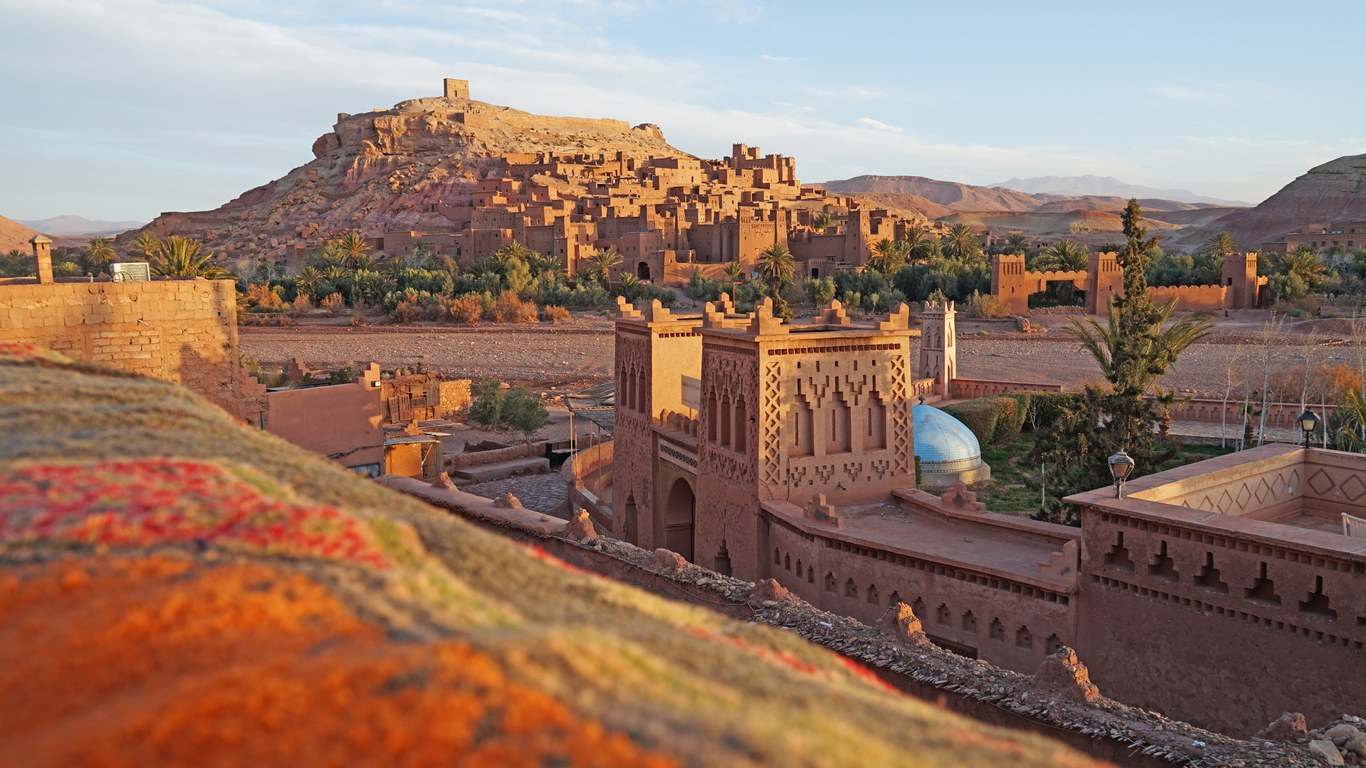
Altus Strategies Plc. announced in July they would be expanding their silver and copper operations in the Anti-Atlas of central Morocco. Four new copper and silver exploration projects will grow Altus’s moroccon portfolio to a total of 14 projects, covering 824.3 square kilometers.
According to the press release, the new projects will cover 148.5 square kilometers and will be located near the cities of Ouarzazate and Tinghir. These new sites are “strategically well located” as they are close to other established mining operations.
The Company has named the new operations the Agoudim Silver Project, the Assif Silver & Gold Project, the Anezal Base Metal Project, and the Tazoult Silver Project. The Agdz II Copper-Silver Project, which is already in operation, will also be expanded under the terms of the new contract.
Steven Poulton, Chief Executive of Altus, commented “ The Tazoult project is located just 13 km east of the Zgounder silver mine (operated by TSXV-listed Aya Gold & Silver Inc), while the Agoudim project is located approximately 30 km east of, and potentially in the same fault zone which hosts, the Imiter silver mine (operated by the Managem Group). Mineralisation hosted at Tazoult and Agoudim is not necessarily indicative of mineralisation hosted at Zgounder or Imiter.”
Morocco awarded this expansion after an intense bidding war with other large mining companies, which was a “competitive, tender process.” Altus believes the “projects considered to be highly prospective for silver and copper.”
Altus Strategies Plc. was founded in 2007 and is a mining royalty company based out of the UK. According to their website, they are establishing “a diversified portfolio of income generating royalties, royalty rights on pre-production projects and direct project interests.” They have a diverse portfolio of over 20 precious and base metals including silver, copper, gold, iron, zinc, and lead. Altus focuses its projects mostly in the African continent, with projects in more than seven different African countries including Morocco, Cameroon, Mali, Egypt, and Ethiopia.
At the Agoudim Silver Project, lead occurrences were reported, at the Assif Silver & Gold Project, Neoproterozoic volcanics and overlaying sediments were reported, at the Anezal Base Metal Project, Neoproterozoic volcano-sediments and overlying Adoudounian sediments were reported, and at the Tazoult Silver Project, Neoproterozoic volcano-sediments overlaying Cenozoic volcanics were reported.
Not only will these four new projects be taking place, the Company has also created “in-house remote sensing” which will help “prioritize exploration targets” across the new sites.
Poulton explained, “Our team is currently undertaking a systematic in-house remote sensing and mineral prospectivity programme on the Projects, which incorporates the synthesis of satellite imagery with extensive historical exploration datasets. Our field teams will then follow up on the highest priority targets that are generated.”
Poulton says he looks “forward to updating shareholders on the results of these programmes in due course,” and that he is delighted over the award of these four new operations.
The above references an opinion and is for information purposes only. It is not intended to be investment advice. Seek a licensed professional for investment advice. The author is not an insider or shareholder of any of the companies mentioned above.

Three Valley Copper Corporation (“TVC” or the “Company”, formerly SRHI Inc.) announced today its financial and operating results from the second quarter of 2021, which is the three and six months that ended June 30th, 2021.
The Company is focused on growing copper production from, and further exploration of, its primary asset, Minera Tres Valles SpA (“MTV”). Located in Salamanca, Chile, MTV is 91.1% owned by the Company and MTV’s main assets are the Minera Tres Valles mining complex and its 46,000 hectares of exploratory lands. The Company’s financial statements and management’s discussion and analysis (“MD&A”) are available at www.threevalleycopper.com and www.sedar.com.
Highlights
Corporate
- Successfully closed a bought deal offering (“Offering”) including the full exercise of the over-allotment option for net proceeds of approximately $8.3 million.
- The Company, through its indirectly held subsidiary (SRH Chile SpA), subscribed for additional common shares of MTV for approximately $6.8 million, resulting in the Company’s indirect holding of MTV increasing from 70% to 90.3% effective June 3, 2021. Effective August 16, 2021, a further subscription was executed resulting in the Company’s indirect holding of MTV increasing to 91.1%.
- On June 22, 2021, the Company formally changed its name to Three Valley Copper Corp. and began trading on the TSXV under the symbol TVC. In conjunction with the name change, the Company launched a new website (www.threevalleycopper.com).
Operations
- Retained Dr. John Mortimer as the Company’s independent exploration geologist to lead the renewed exploration program that commenced in the second quarter of 2021.
- Successfully settled union strike without disruption leaving monthly wages unaffected in a new 3 year agreement.
- Copper cathode production was 1,035 tonnes at an average grade of 0.53%, increasing 15% from 900 tonnes at an average grade of 0.57% for the three months ended March 31, 2021 as the restart and scaling up of operations continued during the second quarter of 2021.
- For the six months ended June 30, 2021, capital expenditures of $6.1 million were incurred related to the construction and development of the incline block caving mine at the Papomono Masivo deposit, consistent with annual guidance of $12 – $15 million total capex. Construction continues and is approximately 50% complete, targeting production commencing early 2022.
- Effective August 1, 2021, an amendment to the offtake agreement was executed deferring the remaining 12 months of contracted delivery amounts of the fixed price sales component (at $2.89/lb) until May 1, 2022. All sales of copper cathodes commencing August 1, 2021 until April 30, 2022 will be sold at the prevailing spot price for copper cathode, less a nominal amount.
Financial
- Reported gross loss of $4.3 million (including a write-down of inventory of $4.2 million primarily on long-term inventory) on a realized copper price1 of $3.37 compared to $2.42 in Q2 2020.
- Adjusted EBITDA from continuing operations1 of $0.1 million compared to $(1.8) million in Q2 2020.
- Net loss per share attributable to owners of the Company of $(0.12) compared to $(0.10) in Q2 2020.
Source: Three Valley Copper Corp.
Three Valley Copper Corp or “TVC” is located in the Cretaceous belt of Chile and has over 46,000 hectares of land to explore and mine. TVC already has over 100 copper occurrences and 70 “artisanal exploitation points” registered with geological features similar to those of its “identified orebodies.” They are currently producing 99.999% pure copper from its mineral reserves, with up to 18,500 tonnes of pure copper cathodes annually, which are the highest quality cathodes available on the market. TVC has also completed 170,000 meters of diamond drilling, and has a handful of other successful Chilean copper mines. TVC has great potential in the copper mining industry as only roughly less than 10% of their 46,000 hectares has been explored, leaving thousands of hectares yet to be investigated.
The above references an opinion and is for information purposes only. It is not intended to be investment advice. Seek a licensed professional for investment advice. The author is not an insider or shareholder of any of the companies mentioned above.

After investors continue to express concerns regarding the global macroeconomic outlook due to another increase in COVID-19 cases across Europe and North America, the copper price has extended its decline.
In September, copper for delivery fell from 2.2% from Monday’s settlement price, hitting $4.23 per pound ($9,306 per tonne) on the Comex market in New York. The Shanghai Futures Exchange fell 0.6% to 69,820 yuan ($10,777.35) a tonne, which was the most-traded September copper contract.
It was also announced this week that China’s refined copper imports fell in July, making it the fourth month in a row that copper has been weighed down.
The effects of the global COVID-19 pandemic have caused companies to have to tighten their policies and keep the price of copper down. This could result in a lengthy recovery for copper as the fourth wave hits and the economy becomes uncertain. As more cases begin to pop up across Europe and North America, it is unclear how long the copper decline should be extended.
Reuters columnist Andy Home said “The lack of excitement reflects a dearth of speculative interest in copper right now, with fund positioning low on the LME, the CME, and the Shanghai markets.”
“Macro headwinds in the form of slowing growth impetus in China and the spread of the Delta variant of covid-19 are currently outweighing copper’s micro-dynamics in investor minds.”
Home also explained that although copper is on an extended decline, an upside that seems to be forgotten about is “the greater availability for scrap metal.”
Goldman Sachs believes that although China has gotten copper to where it is now, a struggling supply is what is going to force a spike in the price to occur.
According to the bank, the tension between macro negativity and micro positivity is “particularly acute for copper,” given a structurally challenged supply chain.
Whatever minor acute setbacks copper prices have week to week, production and profits are higher than ever. Ecuador’s mining exports could hit $1.6 billion in 2021, which is a 74% increase from 2020. The Energy and Non-Renewable Natural Resources Ministry said this rise could happen since two of the biggest miners in Ecuador plan to boost copper and gold mining.
In total, Ecuador’s mining exports totaled $921 million. This included copper sales from the Mirador mine owned by Ecuacorriente, a unit of Chinese consortium CRCC-Tongguan, and gold sales from Canadian miner Lundin Gold Inc’s Fruta del Norte mine. Ecuador’s new mining decree is set to position the country as a leading mining jurisdiction over the next decade, with huge investment inflows to follow.
Ecuador has also just completed the first phase of drilling at its wholly-owned Los Osos project in El Oro. Six holes in total were drilled, completing 3,785 metres of drilling.
The above references an opinion and is for information purposes only. It is not intended to be investment advice. Seek a licensed professional for investment advice. The author is not an insider or shareholder of any of the companies mentioned above.
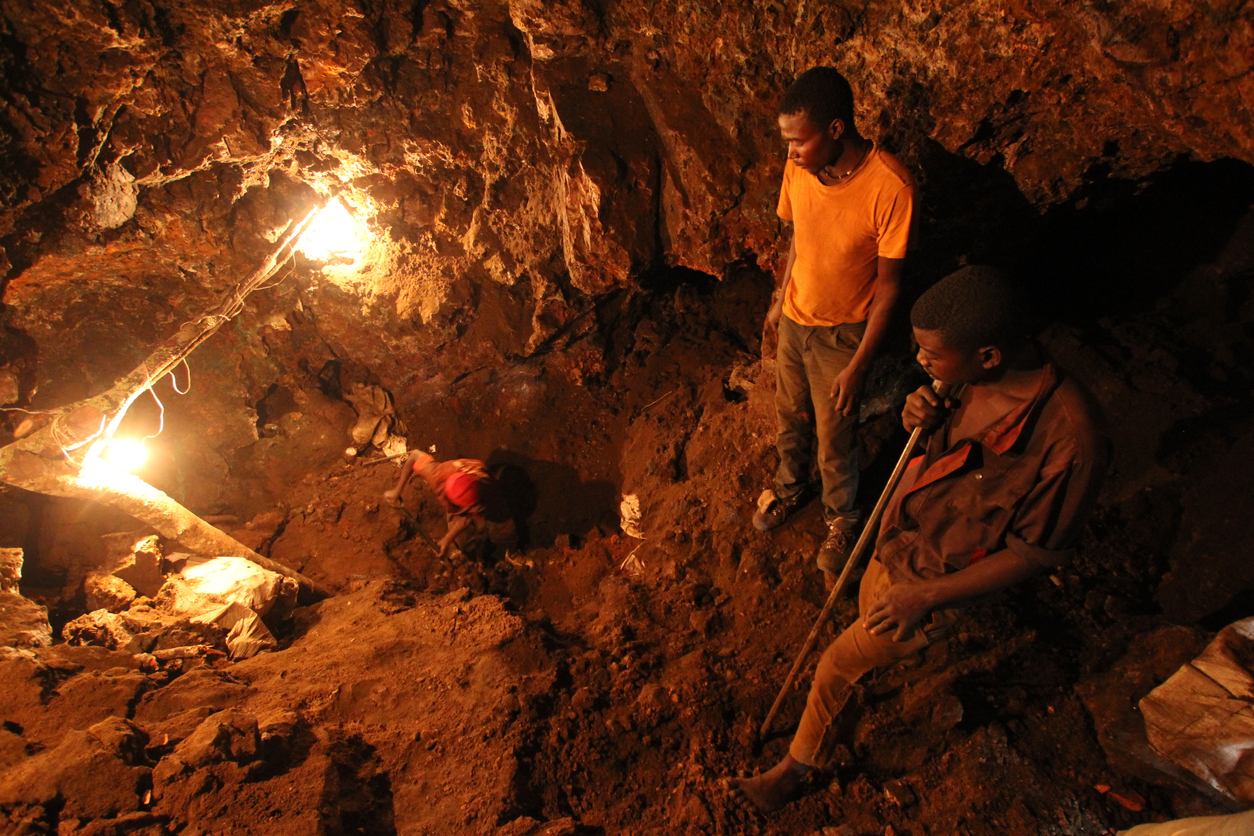
Cobalt hydroxide is a feedstock material that is typically produced during the primary processing of ores. According to Benchmark Mineral Intelligence, cobalt hydroxide has been on a tear, up 15% in July to $46,375 a tonne (midpoint 100% Co basis CIF Asia) which pulls gains so far this year to 64%.
Just last week, China Molybdenum announced it will be doubling its cobalt and copper production at its giant Tenke Fungurume mine in the Democratic Republic of Congo. This production upgrade is just over a $2.5 billion dollar investment, which follows China Molybdenum’s acquisition of another Freeport property in the Congo, Kisanfu, for $550 million in December.
There is also a trial production that is already ongoing for a separate expansion at the Tenke Fungurume mine, which is expected to produce some 34,000 tonnes per year by 2023.
Since there are only 140,000 tonnes produced globally in 2020 according to USGS, this size of expansion would normally result in a big shift or impact in such a tiny market. Such as putting a “damper on the outlook for the raw material used primarily for superalloys and in the battery supply chain.”
However, a London-HQed metals and chemicals researcher, Roskill, argues there won’t be much of an impact on the price of supply due to the changing mining environment in Congo.
Roskill explained that over decades of large and small scale mining, close to surface, high-grade oxidised orebodies in the Congo have been diminished. Waste is now being reprocessed at operations such as STL’s Lubumbashi slag heap and ERG’s Metalkol RTR since the grades at ground level have degraded so severely.
“As a result, the DRC cobalt sector is likely to become more dominated by existing large-scale producers, moving towards an oligopoly in the near future: by 2025, the top three cobalt miners in the DRC could potentially supply over half of the market. Considering the strong demand outlook for cobalt and the increasing costs to mine the material, Roskill expects to see limited downside in cobalt prices in the short to medium term.”
More than two-thirds of cobalt supply is mined in the DRC and about 80% of midstream processing happens in China. This means the Tenke Fungurume expansion could further increase the control for the largest mining companies.
Another growing trend among mining companies in the central African nation is transitioning from open pit to underground mining. They are also switching from oxidised orebodies to sulphide orebodies in order to “unlock new resources and extend the life of mines.”
Although the Tenke Fungurume expansion plans to focus on processing oxidized ores, a mixed ore project with oxidised ore and sulphide ore reserves would target deeper in the transition zone, increasing capacity. Major cobalt miners such as Glencore and Wanbao Mining are also pondering the option to expand their resources and capacity using oxidized and sulphide ores.
Roskill explained “Underground mining can be more costly than open-pit mining, owing to higher capital investment and mining costs. In the case of the DRC, as the mines get deeper, the copper-to-cobalt ratio would typically rise, reflecting increased copper grades and lower cobalt grades. Roskill believes that this would raise the entry barrier for junior cobalt miners both economically and technically in the coming years.”
The above references an opinion and is for information purposes only. It is not intended to be investment advice. Seek a licensed professional for investment advice. The author is not an insider or shareholder of any of the companies mentioned above.

The multinational miner BHP has begun discussing potentially leaving the oil and gas industry and merging its hydrocarbon division with Woodside Petroleum, Australia’s top independent gas producing company.
BHP announced on Monday that a merger with Australia’s Woodside was one of the options being considered as part of a strategic review of its oil and gas business. This merger agreement could also result in possible Perth-based energy group’s shares to be distributed among BHP shareholders.
Currently, analysts estimate that BHP oil and gas sector is worth $13 billion and Woodside is estimated at a market value of $15 billion.
“While discussions between the parties are currently progressing, no agreement has been reached on any such transaction,” said BHP. “A further announcement will be made as and when appropriate.”
The choice to discuss and review BHP’s petroleum business comes as more companies are beginning to brainstorm and convert to ‘green’ and environmentally friendly methods. Fewer fossil fuels are being used intra-industry as well as big mining companies are starting to seriously think about the effects of climate change, and how they can electrify their operations.
They plan to merge all of their oil and gas assets, including oil and gas fields in Australia, Algeria, and the Gulf of Mexico to focus more on producing metals that can help the environmentally friendly movement.
BHP promised around this time last year that they would sell off their remaining coal mines by this time next year, as part of their future plan to be a low carbon company. Only 12% of BHP’s revenues come from fossil fuels after they cut their oil and gas production in half from the sale of its US shale business in 2018. The company’s oil and gas production fell from 235m barrels in 2013 to about 103m in the 12 months to June.
Saul Kavonic, an analyst at Credit Suisse Group, believes that “petroleum no longer fits with BHP’s portfolio or future-facing strategy.”
“After waiting too long to divest thermal coal, and now having to resort to selling cents on the dollar, BHP should know it’s better to exit petroleum sooner rather than later,” said Saul Kavonic.
Although they plan to get rid of their remaining coal mines, BHP will remain to pursue a venture that produces coking coal. This coal is used in the process of making steel and could eventually help steelmakers cut carbon emissions and adopt cleaner processes.
However, some shareholders are criticizing the company for continuing with investments in the oil and gas division, since they are directly linked to the climate crisis and the rising of carbon in the atmosphere.
At the company’s shareholder meeting last October, the BHP chief executive, Mike Henry, said the company saw oil and gas as “something to invest in for the short to medium term”.
Ken MacKenzie, the chair, said even though BHP accepts “the science around climate change” he believes that “the reality is that all current plausible scenarios show that fossil fuels will be part of the energy mix for decades.”
The above references an opinion and is for information purposes only. It is not intended to be investment advice. Seek a licensed professional for investment advice. The author is not an insider or shareholder of any of the companies mentioned above.
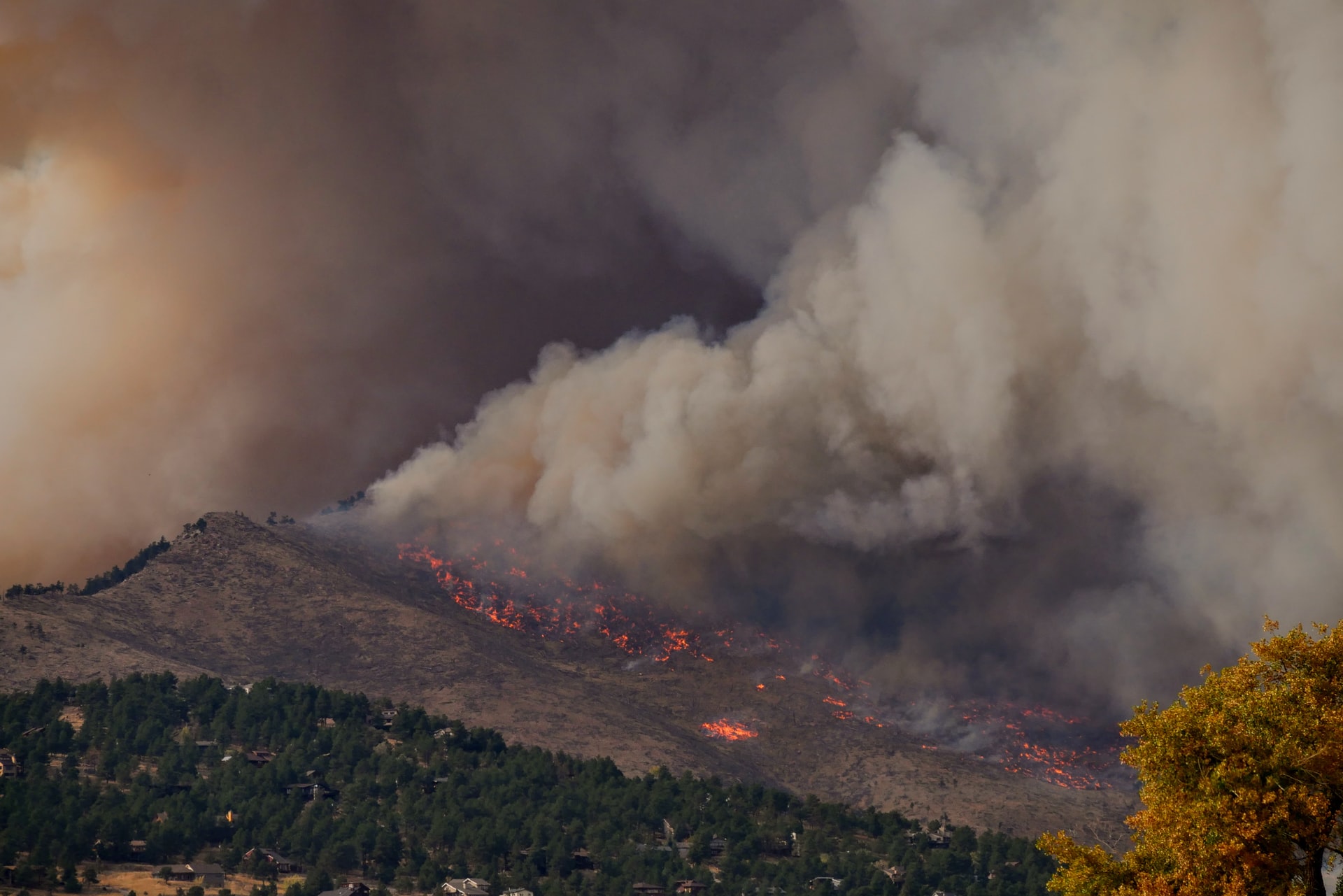
Growing wildfires in British Columbia continue to create complications for everyone in the region. High winds continue to fan the flames of massive blazes in southern and Interior BC. Those fires have prompted evacuations for hundreds of properties and several highway closures.
Teck Resources (NYSE:TECK), Canada’s largest diversified miner, is also feeling the heat after the District of Logan Lake issued an evacuation order. As a result, the company has had to close its Highland Valley copper mine. The closure of the mine means all workers except employees essential for ensuring safety and environmental protection have been evacuated now. The company will continue to monitor the situation closely but sees no risk to its infrastructure in the region so far.
This delay could ultimately have an effect on production, but of course, this is dependent on the length of the evacuation order. In the meantime, Teck is not standing by idly. The company has already donated C$!50,000 to support all of the British Columbia wildfire relief efforts, with an additional $100,000 going to the Canadian Red Cross, and $50,000 going to the Society for the PRevention of Cruelty to Animals.
Teck employees have pooled their resources and have donated to the causes, with the company matching the $25,000 they raised.
This is nothing new for the company and the province, as wildfires continue to rage. Evacuations and significant quantities of smoke have now been a regular feature of the landscape for some time now in 2021. Smoke from these wildfires has been getting in the way of the company’s operations, primarily because of low air quality.
The low air quality is an untenable condition for the mining company and shut down the oxygen plant, which is needed for production at Teck’s metallurgical plant. As the fires continue to burn and firefighters do all they can to stop them, the company has indicated that it will provide any updates to production guidance if it is needed when the smoke clears.
The above references an opinion and is for information purposes only. It is not intended to be investment advice. Seek a licensed professional for investment advice. The author is not an insider or shareholder of any of the companies mentioned above.
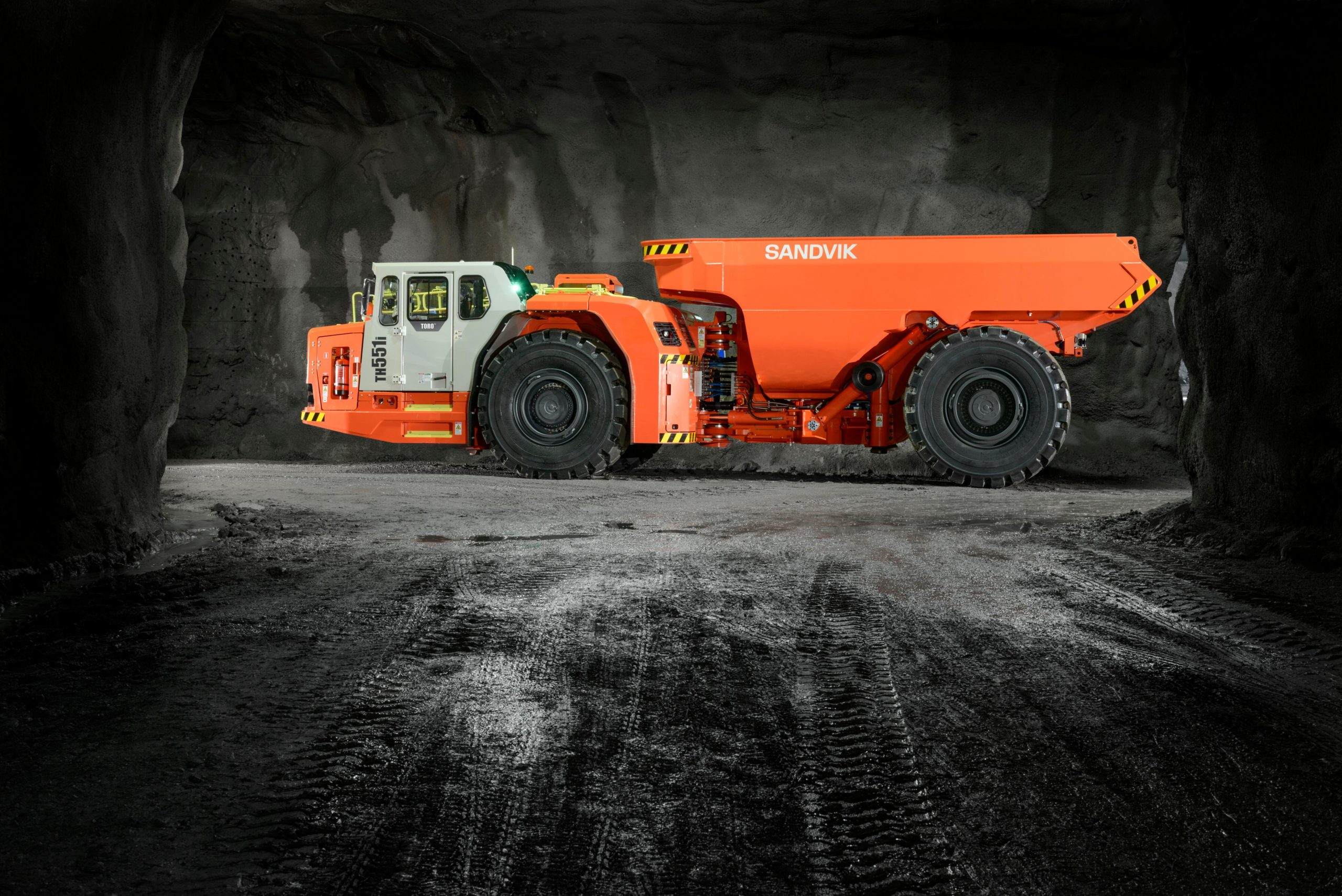
Sandvik Mining and Rock Solutions has moved its South Africa headquarters to a brand new, purpose-designed premises in Kempton Park near Johannesburg. This move is said to be a strategic one as it will consolidate its resources and further enhance its services to customers.
According to the Managing Director at Sandvik South Africa Simon Andrews, the new and modern Khomanani facility includes three large workshop areas and office space on a 62,000 sq.m site.
“Our remanufacturing facility allows us to completely rebuild machines to OEM standards, including the sub-assembly refurbishments on transmissions, axles, differential and pump motors,” says Andrews.
The first workshop has 23 bays for machines to be refurbished, while the second is specially equipped with 100 tonne capacity flooring for the heavier tracked equipment such as underground continuous miners and surface drill rigs.
Two of the workshops are dedicated to refurbishment and rebuilding of local equipment for the southern African region – mainly Botswana, Namibia and South Africa. This is where new standard-format equipment is configured for local use – typically including features like safety systems, lighting, tow-hitches and specific decals for customers.
“The technical synergies of the workshops add to our commitment and capacity for local production that meets global quality requirements,” said Andrews.
The third workshop focuses on local assembly of equipment for both South Africa as well as global markets to Sandvik’s OEM standards.
Sandvik as a whole was founded in 1862 in Sweden and has continuously grown over the years into what it is today. They now specialise in four different areas of business with just under 40,000 employees, including materials technology, mining and rock excavation, and metal cutting.
Sandvik Mining and Rock Solutions are a global leading supplier in equipment, tools, parts, service and technical solutions for the mining and construction industries. They provide services such as rock drilling, rock cutting, loading and hauling, tunneling and quarrying.
Sandvik anticipates an improvement of workflow and efficiency by allowing heavy transport vehicles to loop in and out with equipment without needing to manoeuvre at the new site. A combination of cranes from 5 tonne to 30 tonne capacity, as well as a specialised 50 tonne forklift, facilitate safe and quick off-loading and reloading.
“The technical synergies of the workshops add to our commitment and capacity for local production that meets global quality requirements,” said Andrews.
In line with Sandvik’s international guidelines, the design of Khomanani prioritises energy and water efficiency. With a shared solar photovoltaic system and switching to LED light bulbs, the building is expected to save up to 48% on energy. It is also making greater use of natural light, roof insulation, and ‘low-E’ coated glass. Updated water-efficient fixtures, fittings, and systems, as well as rainwater harvesting, will improve water consumption levels by 42%.
“As the Tsonga name Khomanani reflects – ‘hold each other together as a unit’ – our new home unites us under one roof to collaborate, adapt and learn as we strive towards higher standards,” Andrews commented.
The above references an opinion and is for information purposes only. It is not intended to be investment advice. Seek a licensed professional for investment advice. The author is not an insider or shareholder of any of the companies mentioned above.
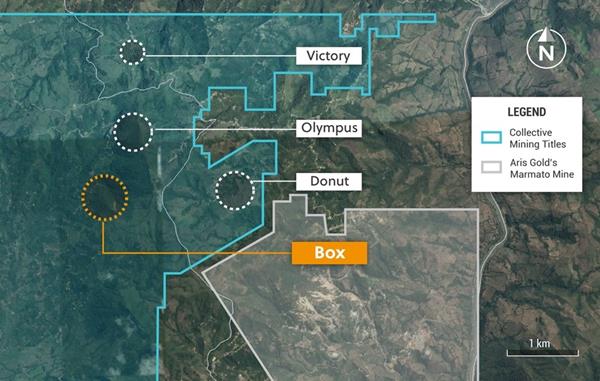
Collective Mining (TSXV:CNL) announced that it had received $13.5 million from the exercise of of common share purchase warrants on August 10 at an exercise price of $2.00. The warrant were originally issued on May 20 after the company’s qualifying transaction on the TSX Venture Exchange.
The inflows from the warrant exercise gives Collective Mining (TSXV:CNL) a larger cash balance to fund its flagship Guayabales project, of which exploration is already underway, with a recent high grade silver discovery further cementing the company’s vision for the project.
Recent channel sampling from the Box target showed a significant discovery for the company and revealed a new porphyry-vein system. The company’s flagship Guayabales project is returning good results with recent exploration efforts, and the injection of fresh capital will give the company a long runway to continue its efforts at the site.
The project, located in the the Caldas region of Colombia, is situated northwest of the Marmato gold mine owned by Aris Gold, which contains proven and probable reserves of 2.0 million ounces gold and 4.35 million ounces silver.
The mineral-rich area positions Collective’s Guayabales project right in the centre of many gold-copper-molybdenum porphyries and associated breccias. The site includes high-grade precious and base metal vein systems superimposed on the systems and which enrich those porphyry bodies.
“The Box discovery demonstrates the excellent potential of the Guayabales project which now hosts at least three mineralized porphyry bodies, gold bearing breccia and multiple zones of high grade, gold and silver veins. Our exploration continues to discover new mineralized zones and our reconnaissance work to date has only covered about fifty-percent of the concession. The future looks bright for Collective and we are planning a lot of target drill testing in the near future,” commented Ari Sussman, Executive Chairman.
The above references an opinion and is for information purposes only. It is not intended to be investment advice. Seek a licensed professional for investment advice. The author is not an insider or shareholder of any of the companies mentioned above.
 As the mining industry continues its path toward a cleaner future in the digital-first era, Siemens is leading the pack. The company has launched its SIDRIVE IQ industrial IoT monitoring solution drive systems, intended to increase drive uptime and ultimately improve mine site productivity. The system was launched at Siemens’ Virtual Smart Mining Forum, with the goal of putting more powerful tools in the hands of mining companies to boost productivity and profits over the long term.
As the mining industry continues its path toward a cleaner future in the digital-first era, Siemens is leading the pack. The company has launched its SIDRIVE IQ industrial IoT monitoring solution drive systems, intended to increase drive uptime and ultimately improve mine site productivity. The system was launched at Siemens’ Virtual Smart Mining Forum, with the goal of putting more powerful tools in the hands of mining companies to boost productivity and profits over the long term.
IoT, or Internet of Things, is a technology that connects devices for communication, monitoring, and synchronized feedback across a single system. Many IoT systems are in the early stages of development, but one popular consumer example is an Amazon Home system consisting of smart light bulbs, a fridge, or other appliances linked via an app and run using the AI system called Alexa.
IoT for Mining
Siemens is now bringing full connectivity to industrial monitoring to allow miners to connect their equipment, monitoring pipelines, and continue to stay in touch even when managing multiple projects across different sites. The forum the product was launched at, The Virtual Smart Mining Forum, focuses on exploring new trends and the impact of technology on the African mining sector.
SIDRIVE IQ will monitor and track the performance and health of drives across multiple sites. The product can monitor the health of medium voltage converters and high voltage motors simultaneously while providing feedback through an advanced user interface. The system will let companies know when their equipment needs servicing and even whether the equipment is functioning properly in real-time.
SIDRIVE IQ starts with a collection of smart products that can be connected to the system. These products and equipment can be linked using the SIDRIVE IQ digital platform for monitoring and management. When equipment needs repair or on-site checkups, the system is linked to the services that are required, and the proper service can be dispatched to take care of any issues.
The Complete Package
The Suite’s dashboard can minimize unplanned downtime with automated failure notifications, improve data transparency with easy access to recent and historical data, and troubleshoot any faults. Mining companies will be able to increase efficiency and reduce losses. This is of particular importance for the African mining industry after a challenging year and goals of bigger production.
“COVID-19 has prevented the industry from having progressive conversations about how to move the mining sector forward,” Tim Walwyn – Head of Mineral Solutions, Siemens Southern and Eastern Africa, said. “This three-day event is an opportunity for us to bring the mining community together to reignite the dialogue and share knowledge to help us sustainably transform the future of mining in Africa. As a partner to African mines, our electrification, automation and digitalisation portfolio offers a combination of deep understanding of the mining industry with state-of-the-art technologies.”
Sabine Dall’Omo, Siemens CEO for Southern and Eastern Africa, says: “Our main objective with this event was to initiate a forum for knowledge transfer to the industry and raise awareness of the opportunities created by technology. We’re excited to bring this collaborative forum, where we can showcase the latest technological innovations for the industry and explore their effects on the African mining landscape.”

Otso Gold Corp (TSXV:OTSO) announced that it has executed a mining contract with E Hartikainen Oy for the provision of all mining services at the Otso gold mine in Central Finland for a term of three years. E Hartikainen Oy is one of the largest mining and construction contractors in Finland, and the deal marks the home stretch for Otso’s plans to move into production for 2021.
The agreement stipulates that machinery for mining is already on the way to the site in anticipation of the start of mining operations in September.
Brian Wesson stated, “The company is pleased to have partnered with Hartikainen at the Otso Gold Mine and looks forward to working together. The execution of the mining contract is an important milestone towards the start of production next month.”
Arto Hartikainen, Managing Director of Hartikainen, said: “We are very happy with Otso Gold Mine’s partnership and we are starting preparation work right away. Safety, quality and productivity will play a key role in the development of our services at the Otso Gold Mine.”
Otso Targets 100% Renewable Energy Sources
Otso Gold (TSXV:OTSO) , a Canadian-based company, has its flagship project in Finland called the Otso Gold Mine. The mine is a 2 million tonne per year gold processing facility and largest open cut operation. Otso Gold (TSXV:OTSO) has the benefit of being fully funded and with the new deal with Hartikainen, ready to begin production in 2021. The Otso Gold Mine is not the company’s only asset either, although it is the company’s flagship project. The company also owns other exploratory titles in Finland and 49% of a copper porphyry project in the “golden triangle” in British Columbia, Canada.
Otso is moving ahead with production in a unique and sustainable way, as the company has a clear and focused ESG plan in place for its project. The Otso Gold Mine sources just over 80% of its power from renewables. That is a significant accomplishment for the company and the country. Additionally, the company plans to use 100% renewable energy in the near future at the Otso Gold Mine.
Fully Funded Production
Funding the production at the Otso Gold Mine is some of the capital from the recent private placement from Brunswick Gold Ltd. The deal allowed Otso to receive US$11.115 million from the exercise of 284,944,440 common share purchase warrants. The proceeds from the exercise of those warrants will enable Otso to return to production of the Otso Gold Mine in Q3 2021 with the help of the new deal with Hartikainen.
Otso Gold expects to publish an updated NI 43-1010 Technical Report shortly, and this will provide some guidance on the company’s plans for the resumed production expected to begin next month.
The above references an opinion and is for information purposes only. It is not intended to be investment advice. Seek a licensed professional for investment advice. The author is not an insider or shareholder of any of the companies mentioned above.
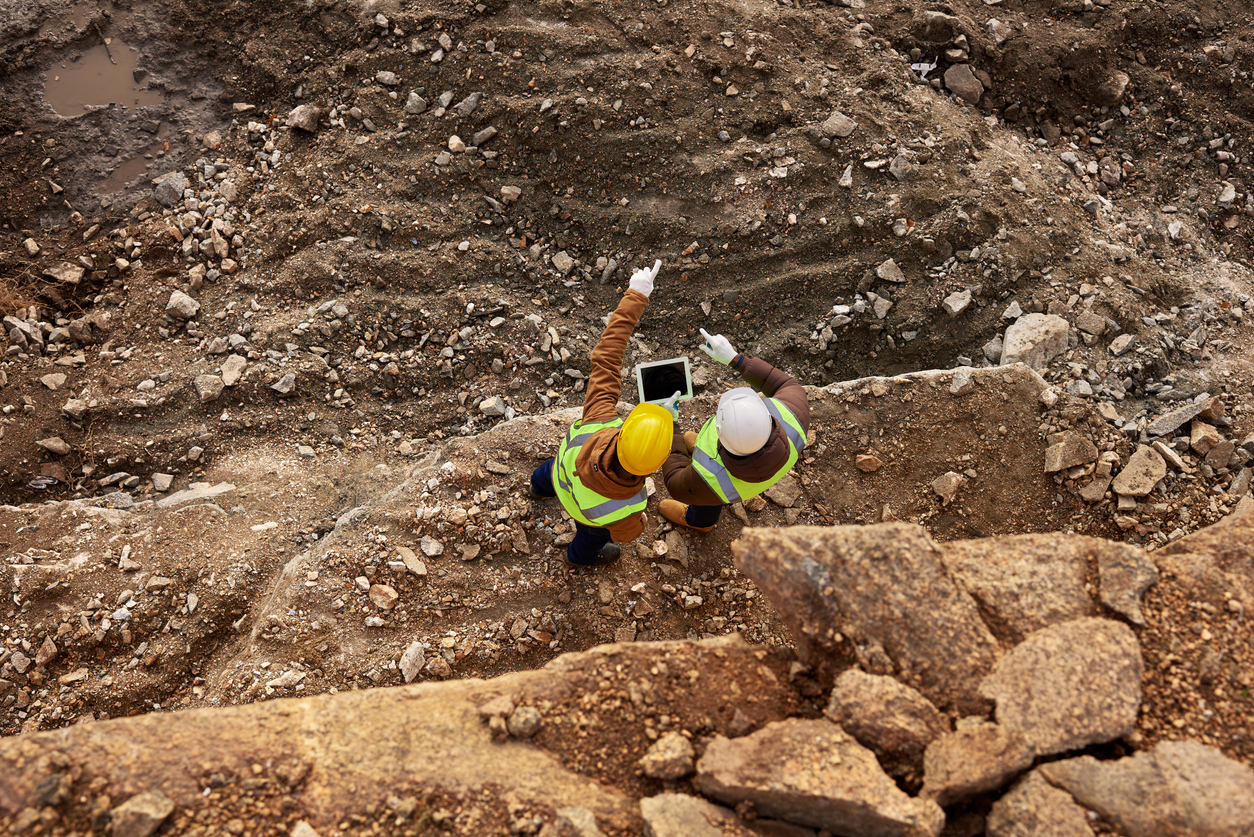
OreFox, an artificial intelligence-based geological data analytics company that provides analytics to mining and exploration companies has secured funding via the Queensland METS Collaborative Projects Fund. OreFox is undertaking geological mapping efforts at a Mount Chalmers mine site in Queensland, Australia.
The AI company has partnered with QMines Ltd. and Ironbark Marketing to commercialise its revolutionary technology with the aim of solving critical challenges for the mining industry. Exploring and discovering mineral deposits more efficiently could mean faster results for miners, investors and less long-term cash burn.
A Critical First Project
OreFox is backed by some key investors that include the Queensland University of Technology, and the new funding from the Queensland METS Collaborative Project Fund comes from METS Ignited, which has support from the Queensland Government. The government outlined a 10-year roadmap recently called the Queensland Mining Equipment, Technology Services Roadmap and Action Plan, with the goal of improving the Queensland mining sector’s efficiency and profitability while reducing emissions.
The Mount Chalmers deposit will be a testing ground for the AI-driven technology. OreFox and the consortium it leads hope to gain more knowledge of the deposit, a historical producing mine. The potential for the mine lies in discovering new economic mineral opportunities and increasing the known mineral endowment. QMines has already begun exploration activities at the Mount Chalmers project that includes an aggressive drilling program, and OreFox aims to improve on that program.
Machine and Deep Learning Systems
A multi-element geochemical sampling program focused on critical minerals at the mine site will be carried out, but that won’t be the only focus. The consortium will also explore at other notable prospective sites around the historic mine site, with OreFox providing and testing its technology to improve the efficiency of the operation. Data collected, including assays from the current drill program, will be processed by OreFox using machine and deep learning systems.
These systems learn from the historical data so as to find the patterns and project future discovery probabilities onto the site. OreFox aims to provide further insight into the project than could normally be gleaned from a standard report. If the project is successful, QMines thinks that any discovery or more economic minerals will allow the project to move to development much faster, and eventually production as the Mount Chalmers mine has the potential to bring significant economic benefits to the region and the state.
Long-Term Exploration Potential
CEO of OreFox Warwick Anderson commented, “This project has the potential to increase exploration activity in Queensland, particularly for new economy minerals, and could be applied to numerous other historical mines and deposits. The partnership between OreFox, QMines, and Ironbark Marketing is anticipated to bring more regional jobs to Queensland and aid Queensland exploration frontiers. If we can prove the value of this project, then that opens the door to a significant export market for the processes we are developing.”
METS Ignited CEO Adrian Beer said in a statement that, “METS Ignited is driving collaborative projects to accelerate commercial outcomes for the Australian economy and promote collaboration opportunities as part of a long-term strategy for growth. We are backing projects using technology such as sensors, data analytics, machine learning optimised x-rays, and solar energy that result in improvement in productivity, efficiency, safety, and sustainability. The OreFox project is a great example of how AI and data science technologies can be harnessed to improve exploration and unlock the economic benefits of a historical mine site.”
The mining industry is barreling toward a more sustainable, technologically-advanced model, with AI playing an ever-important role at every level of the process. Artificial intelligence drives much of the operations at the back-office level for large corporations in the industry, and as it plays a larger role in the mining operations, companies may come to find that companies like OreFox have quite a bit to offer during exploration, discovery, and even production.
The above references an opinion and is for information purposes only. It is not intended to be investment advice. Seek a licensed professional for investment advice. The author is not an insider or shareholder of any of the companies mentioned above.
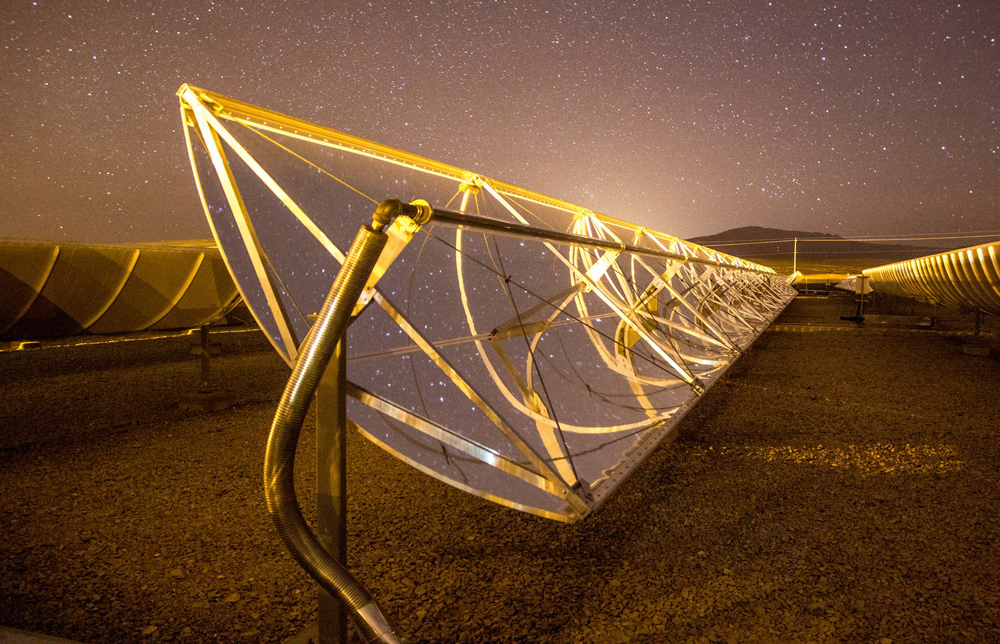
Antofagasta’s Centinela mine in Chile is the company’s first to obtain the international Copper Mark. The Copper Mark program is voluntary and open to all industry members. The certification is a bonus for the miner as it forges a sustainable path forward at its mines. The Copper Mark conveys a copper producer’s commitment to meet industry sustainability standards throughout operating practices and is a signal to investors and other stakeholders that the company has a credible verification of those practices at copper production sites.
The General Manager of Centinela Carlo Espinoza said, “After a rigorous process, involving self-assessment and an independent audit, we are very proud to be the first mining operation in the company to obtain the Copper Mark, which certifies that our operating and other processes are carried out in accordance with the best sustainability practices in the industry.”
The certification can be applied for mines, smelters, and refineries as well. The Copper Mark is not a simple program to enter and requires that the mine in question meets the criteria for a sustainable copper project. It requires a steady flow of information on site-level, risk-management practices, and public reporting on the positive on-the-ground impact.
Ivan Arriagada, CEO of Antofagasta plc, commented: “The importance of obtaining this certification lies in Antofagasta’s commitment to modern and sustainable mining, which transparently incorporates the best practices for the global mining industry.”
The Copper Mark is a difficult compliance bar to pass, requiring compliance with 32 criteria spread over five main categories, including business and human rights, community, labour and working conditions, environment, and governance. Once the initial mark has been awarded, Copper Mark continues to follow up the initial certification with continuous review within the first year. After the first year, Copper Mark returns every three years to certify ongoing compliance with the criteria on the ground at the mine and throughout management.
While many certifications are less stringent than Copper Mark, they do not prove the sustainability and ESG importance of a project as comprehensively. Companies that obtain the certification for their mine, smelter, or refineries are able to use the mark in corporate literature, invoices, contracts, etc., as well as directly on the company’s copper products and packaging. This “seal of approval” clearly states to the buyer that the producer is meeting the industry sustainability standards in operating practices and is continuing with stringent compliance through Copper Mark.
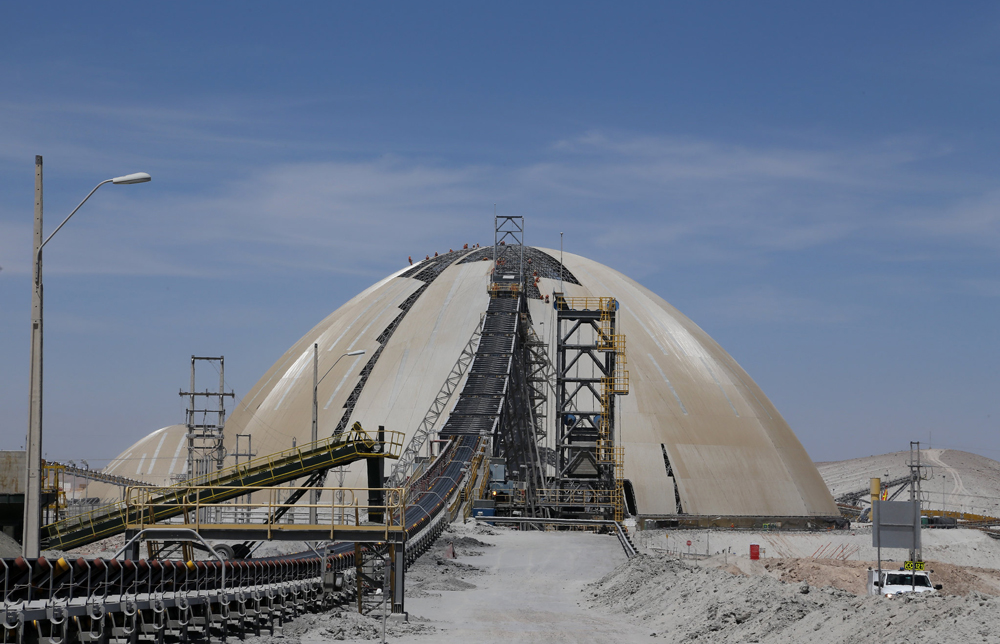
Another mine owned by Antofagasta and Barrick Gold (50% each), Zaldivar should also obtain the Copper Mark next month in September 2021. Antofagasta aims to certify its other two mining operations known as Los Pelambres and Atucoya and has plans to begin the certification process with Copper Mark shortly, according to the company.
In a world that demands more commitment and stricter regulations for the mining industry as it moves toward a greener future, the Copper Mark could become an important industry standard. Companies may find themselves left out of ESG portfolios if they cannot meet the certification standards as well. Additionally, copper is an important metal for the global decarbonization efforts, and mining the critical metal will require cleaner and more efficient practices in the coming decade.
The above references an opinion and is for information purposes only. It is not intended to be investment advice. Seek a licensed professional for investment advice. The author is not an insider or shareholder of any of the companies mentioned above.

MiningFeeds is pleased to report that updates about Three Valley Copper will be covered in full here on MiningFeeds.com, as the company develops and produces at its copper properties in Chile. The company has been on something on a run lately, and we will be bringing you all the updates as they come to ensure you don’t miss anything.
The company’s recent name change was accompanied by an update to the website, a ticker symbol change, as well as a brand new investor presentation. Common shares and warrants trade on the TSX Venture Exchange under the new name and symbols “TVC” and “TVC.WT” after it was changed from SRHI to Three Valley Copper.
In a June statement, Michael Staresinic, President and CEO of Three Valley Copper, commented, “We are pleased to announce a rebranding of the company that reflects its transformation. We want our company name and symbol to clearly reflect our business and its deep roots in Chile.”
The Three Valley Mine
The company’s primary asset, Minera Tres Valles (Three Valley Mine), is located in Salamanca, Chile and is 90.3% owned by the company. The main assets at the property are the mining complex and 46,000 hectares of exploratory lands.
The Canadian copper mining company’s projects are located in the prolific Cretaceous belt of Chile that hosts a large number of rich deposits. The company produces Electrolytic Copper Cathodes (Grade A) of 99.999% purity. That copper is often used in electric equipment like technology, battery parts, and the copper can easily be drawn and formed into wires.
With the current focus on global decarbonization efforts, this particular type of copper is seeing massive demand growth. Electrolytic copper undergoes refining or purification through the process of electrolysis. That purification is by far the simplest method of achieving purity levels 99.999% in copper and makes Three Valley Copper’s product particularly valuable in a world that is rapidly going electric.
Two-Pronged Approach
The company has two main deposits: Papomono Masivo and Don Gabriel. The company’s strategy is to produce ECC, while simultaneously exploring its property to increase the visibility of the mine and extend the life of the mine. Both deposits are located in a 10 kilometre wide corridor of middle to upper Cretaceous volcanic rocks. This property is bounded by north-south-trending faults and stand as examples of stratabound, manto-type copper deposits.
Three Valley’s projects are in progress and advancing rapidly, and MiningFeeds will keep readers informed of any progress and new information for the complete picture of Three Valley Copper.
The above references an opinion and is for information purposes only. It is not intended to be investment advice. Seek a licensed professional for investment advice. The author is not an insider or shareholder of any of the companies mentioned above.
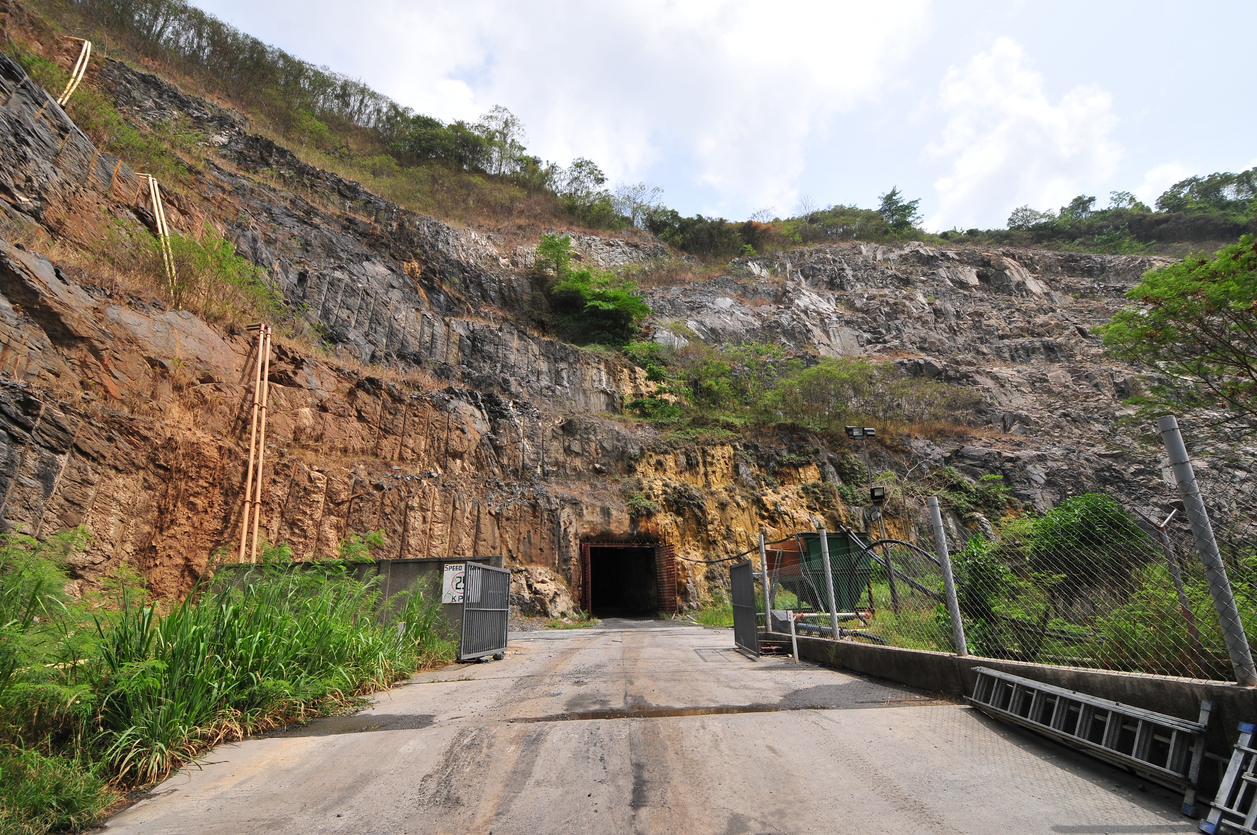
Australian gold mining company Resolute mining Ltd announced they would be selling its entire Bibiani Mine in Ghana to Canada’s Asante Gold Corp for $90 million US dollars. The agreement was announced on Thursday that Asante Gold would purchase 100 percent of the shares in Mensin Bibiani Pty Ltd as they expressed interest in owning the full Bibiani mine in Ghana.
According to a statement from Asante Gold, it is anticipated to be completed within the following ten days post announcement.
The agreement has been approved by the Ghanaian Honourable Minister of Lands and Natural Resources along with Ministerial Consent.
The Ghanaian Honourable Minister for Lands and Natural Resources, Hon. Samuel A. Jinapor, MP, said, “I commend the recent approach of Resolute and Asante in their dealings with the Ministry for Lands and Natural Resources, and I am pleased to support the transition of ownership of Bibiani to Asante.”
This sale between Resolute mining and Asante Gold is just months after China’s Chifeng Jilong Gold Mining dropped out of a deal to purchase the Bibiani mine. This was due to a lack of information regarding a termination of a mining lease.
The $90 million payment will be completed in three stages, with $30 million being paid out at each step. Once upon the initial purchase, on or before six months after the deal is completed, and on or before 12 months upon completion.
Shareholder Value
In the same statement from Asante Gold, Mr. Stuart Gale, Resolute’s Managing Director & Chief Executive Officer, said, “Resolute has made a commitment to deliver sustainable and enduring value to shareholders and to the communities in which we operate. Resolute is proud of its contribution to Ghana and particularly proud to have the opportunity to transfer ownership in Bibiani to a highly regarded team with strong ties to Ghana. I would once again like to reiterate my sincere gratitude to the Minister for his leadership, sense of integrity, and collaboration with Resolute and Asante to achieve a mutually beneficial outcome for all parties. Similarly, Resolute would like to acknowledge the significant contribution made towards this outcome by the Ghana Minerals Commission. I am confident that Resolute’s positive legacy in Ghana, and the interests of all stakeholders in Bibiani, will be protected and enhanced under Asante’s ownership.”
Gale also added that the initial $30 million would be applied for the voluntary repayment of debt.
Resolute Mining Ltd has more than 30 years of experience in successfully exploring, operating, and developing mines in Africa and Australia. They have mined over 8M oz of gold and currently operate the Syama Gold Mine in Mali and the Mako Gold Mine in Senegal.
Asante Forges Ahead
Asante Gold is Africa’s largest and safest gold producer; they are strictly a gold exploration and development company. Ghana’s largest underground mine has developed 24M oz of gold resources and reserves over the years. Asante is also exploring new projects and discoveries near the centre of Ghana’s Golden Triangle.
Asante’s President & CEO, Mr. Douglas MacQuarrie, explained in the same statement that the Bibiani mine has essentially not been taken care of properly since Ashanti Goldfields dropped the project back in 2006. He is excited for the team to “achieve near-term economic returns on this very long-life asset.”
“Resolute has reported in their Bibiani Feasibility Study Update (see ASX Announcement dated 13 July 2018) 2.5 Moz (21.7 million tonnes grading 3.6 g/t) of gold in current JORC resources, and Asante has recognized additional exploration upside opportunities, both from the near surface and underground targets. It is Asante’s intention, as far as is reasonably practicable, to continue building on the excellent base which Resolute has established through its recent 50,500 metres of drilling.”
MacQuarrie also added, “Asante is already exploring on-site and building the management and operations team with a view to bring the Bibiani mine back to production within the next year. Further discussions are underway to fully fund the acquisition and its development using non-dilutive financing.”
The Bibiani mine in Ghana is historically significant and has produced 4 million oz gold in the past. Both Resolute and Asante are committed to a smooth transition in the ownership of the Ghana mine. Asante also announced future plans to co-list shares on the Ghana Stock Exchange.
The above references an opinion and is for information purposes only. It is not intended to be investment advice. Seek a licensed professional for investment advice. The author is not an insider or shareholder of any of the companies mentioned above.

Yesterday, Collective Mining (TSXV:CNL) announced an update for the Guayabales Project in Caldas, Colombia. The mine is just northwest of Aris Gold’s Marmato gold mine which has nearly 2.0 million ounces of gold and 4.35 million ounces of silver. According to the recent update at its Olympus target, the company has found many precious mineralized metals such as gold-copper-molybdenum porphyries. The site is also believed to contain high-grade precious base metal vein systems that enhance the porphyries, making them more valuable.
CEO Ari Sussman Eyes More Targets for Future Drill Testing
This project has been underway for some time now, and is helmed by former executives of the now famous Continental Gold mining company. One of these members was Ari Sussman, who currently serves as the Executive Chairman on the Board of Collective Mining Inc. His famous Buritica mining project a couple years ago was incredibly fruitful in Columbia before selling the company to Zijin mining for approximately $2 billion. Today, that mine is one of the most profitable on the planet and Sussman has similar hopes for the Guayabales mining site. He commented on the Olympus target:
“We are very excited about the Olympus target due to its multiple mineralization styles and enrichment of porphyry mineralization by a high-grade vein overprint. Although underground exposures to channel samples were limited due to extensive small-scale mining-related historical timber support, significant high-grades of both gold and silver were encountered over an area measuring 600 x 600 metres with mineralization remaining open in all directions. Work to date at Olympus clearly indicates that there will be multiple targets ready for drill testing in the near future,” commented Ari Sussman, Executive Chairman.
Highlights
The Company has received results from shallow underground channel sampling at its Olympus target within the Guayabales Project. The Olympus target is a NW trending mineralized corridor located in a porphyry intrusive. Gold and silver mineralization is hosted within multiple styles that include high grade vein, porphyry veinlet, breccia and disseminated systems.
Ten old mine adits have been sampled to date with assay results for the initial six adits reported herein. In all cases, channel sampling was limited to infrequent underground exposures which were not covered by historical post-mining timber support with highlight results as follows:
o 46.5 g/t gold equivalent over 1 metre (19.1 g/t Au and 1,919 g/t Ag);
o 39.0 g/t gold equivalent over 2.7 metres (33 g/t Au and 421 g/t Ag);
o 16.3 g/t gold equivalent over 1 metre (9.7 g/t Au and 464 g/t Ag);
o 20.8 g/t gold equivalent over 0.9 metre (20.7 g/t Au and 9 g/t Ag);
o 13.8 g/t gold equivalent over 1.7 metres (9.3 g/t Au and 314 g/t Ag) and;
o 11.8 g/t gold equivalent over 1 metre (6.1 g/t Au and 399 g/t Ag).
- Porphyry A and B veinlets in sheeted and stockwork zones and associated with disseminated sulphides returned 19 values ranging from 4.7 g/t AuEq to 1.1 g/t AuEq from widths of 2.0 metres to 0.3 metres in available underground exposures. This lower grade mineralization has been overprinted by the high-grade veins.
- The southernmost workings in the target area returned 8.6 g/t AuEq and 8.2 g/t AuEq from a mineralized breccia zone with clasts and matrix of massive sulphide material.
- The Olympus mineralized corridor has been mapped over a width of 600 metres and a NW strike of 600 metres. The target is open in all directions. The 600 metres wide corridor hosts 41 shallow underground adits.
- Underground sampling and surface mapping continues at the Olympus target area.
Table 1: Underground channel sampling at the Olympus Target
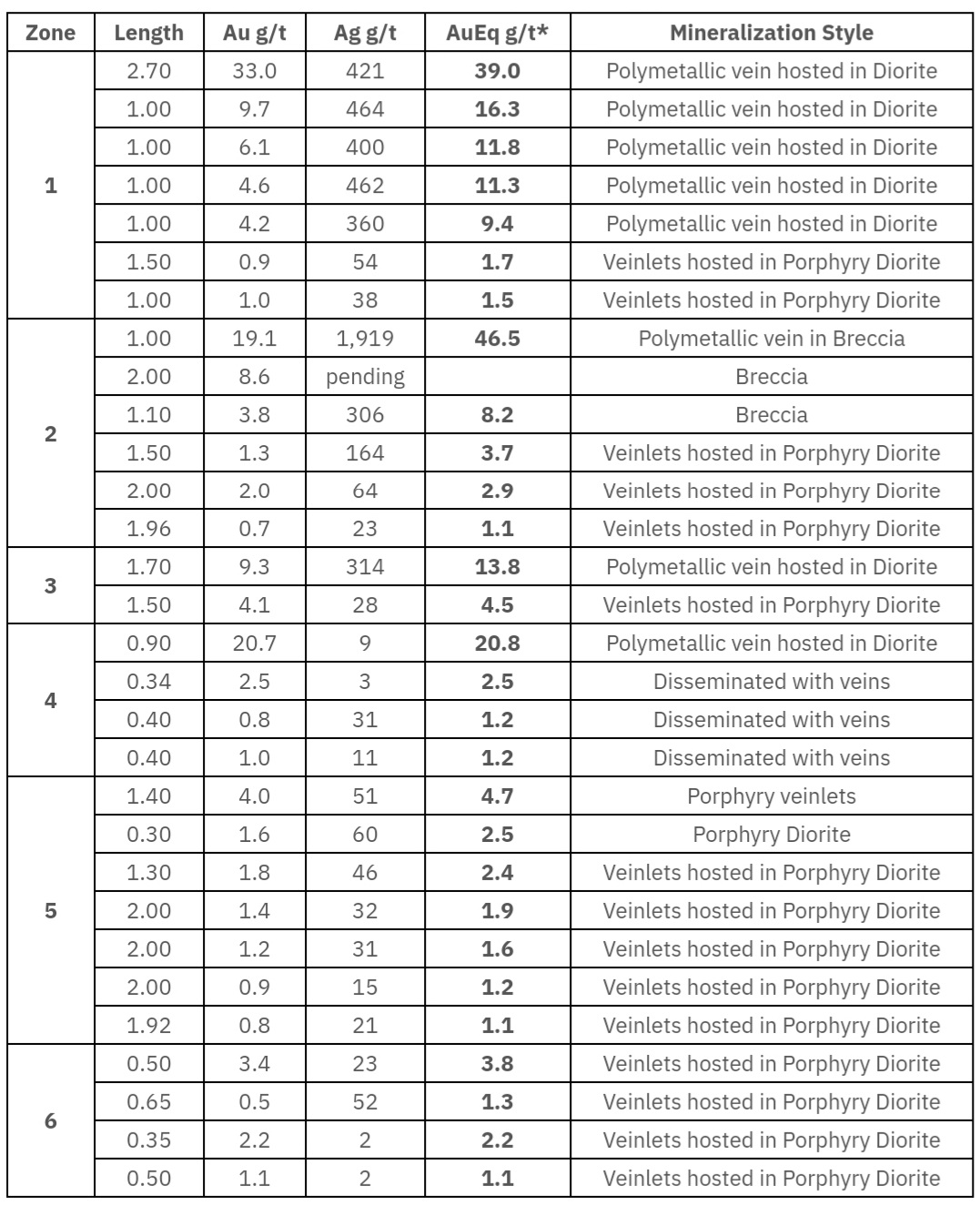

Source: Collective Mining
Figure 1



Figure 2


Figure 3


Figure 4


The above references an opinion and is for information purposes only. It is not intended to be investment advice. Seek a licensed professional for investment advice. The author is not an insider or shareholder of any of the companies mentioned above.
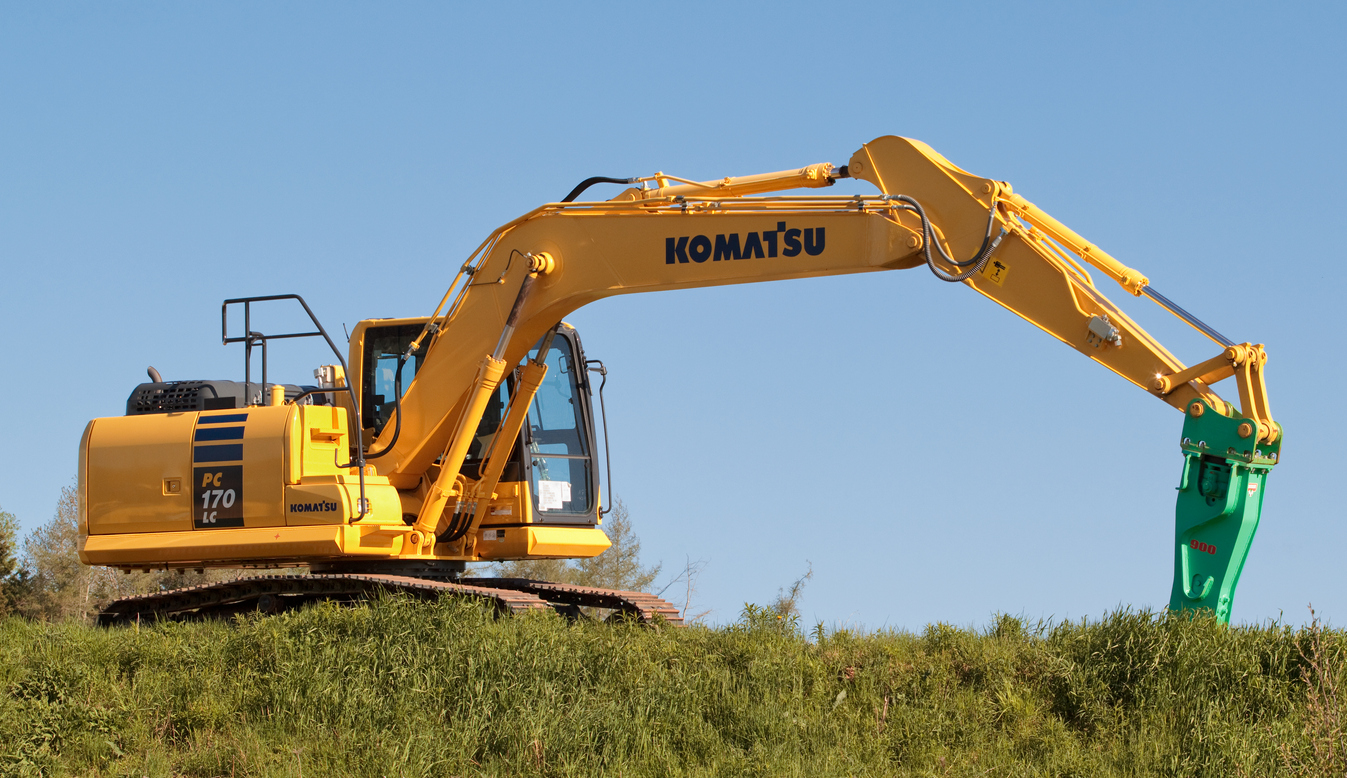

Komatsu is forming an alliance with some of its mining customers Rio Tinto, BHP, Coldelco, and Boliden called the Komatsu Greenhouse Gas (GHG) Alliance. The hope is that this will give Komatsu the chance to essentially supervise and guide these companies through a transition to zero-emission mining equipment and infrastructure. They plan to collaborate with these customers on their products, project development, and assaying. Komatsu’s President of Mining and Business Division Masayuki Moriyama said:
“We are honoured that our customers, several of the largest mining companies in the world, have agreed to participate in the Komatsu GHG Alliance and work in partnership with us to develop sustainable solutions for mining “We look forward to close collaboration with these industry leaders to accelerate development and deployment of the next level of equipment designed to reduce greenhouse gases from mining operations and ultimately achieve the goal of zero-emission mining.”
Komatsu has been investing in zero-emission technology for quite some time now through the development of electric diesel dump trucks, electric power, shovels, and regenerative energy storage equipment.
The goals of this partnership are two-fold. Firstly, they hope to work with these 4 companies to develop a haulage truck that can run on different power sources including diesel, electric, and hydrogen powered fuel cell tech. They hope to demo this product at the MINIExpo in Las Vegas this September. In the long-run, Komatsu hopes to reduce its products carbon footprint by 50% and perhaps even achieve carbon neutrality by 2050.
This alliance will hopefully help achieve these goals, and Komatsu also has to expand the alliance still further.
Rio Tinto and BHP plans to test trucks and purchase them first
Rio Tinto plans to purchase some of the first haulage trucks once Komatsu clears them for sale. Rio Tinto Chief Commercial Officer Alf Barrios said:
“Rio Tinto and Komatsu have a shared history of partnership on innovation going back to when we built the world’s largest Komatsu autonomous haulage fleet in 2008.”
“Our support of a trial, and the option to buy some of the first trucks from Komatsu, underscores our shared commitment to actively collaborate on product planning, development, testing and deployment of the next generation of zero-emission mining equipment and infrastructure as we look to decarbonise our business.”
On the other hand, BHP also will have access to the first edition of the trucks and will play a key role in their development. BHP plans to provide Komatsu with the key engineering and technical background needed for the haulage truck model’s development. It also plans to form a partnership with Komatsu via the BHP FutureFit Academy so that future users will be able to operate and maintain the equipment.
The above references an opinion and is for information purposes only. It is not intended to be investment advice. Seek a licensed professional for investment advice. The author is not an insider or shareholder of any of the companies mentioned above.
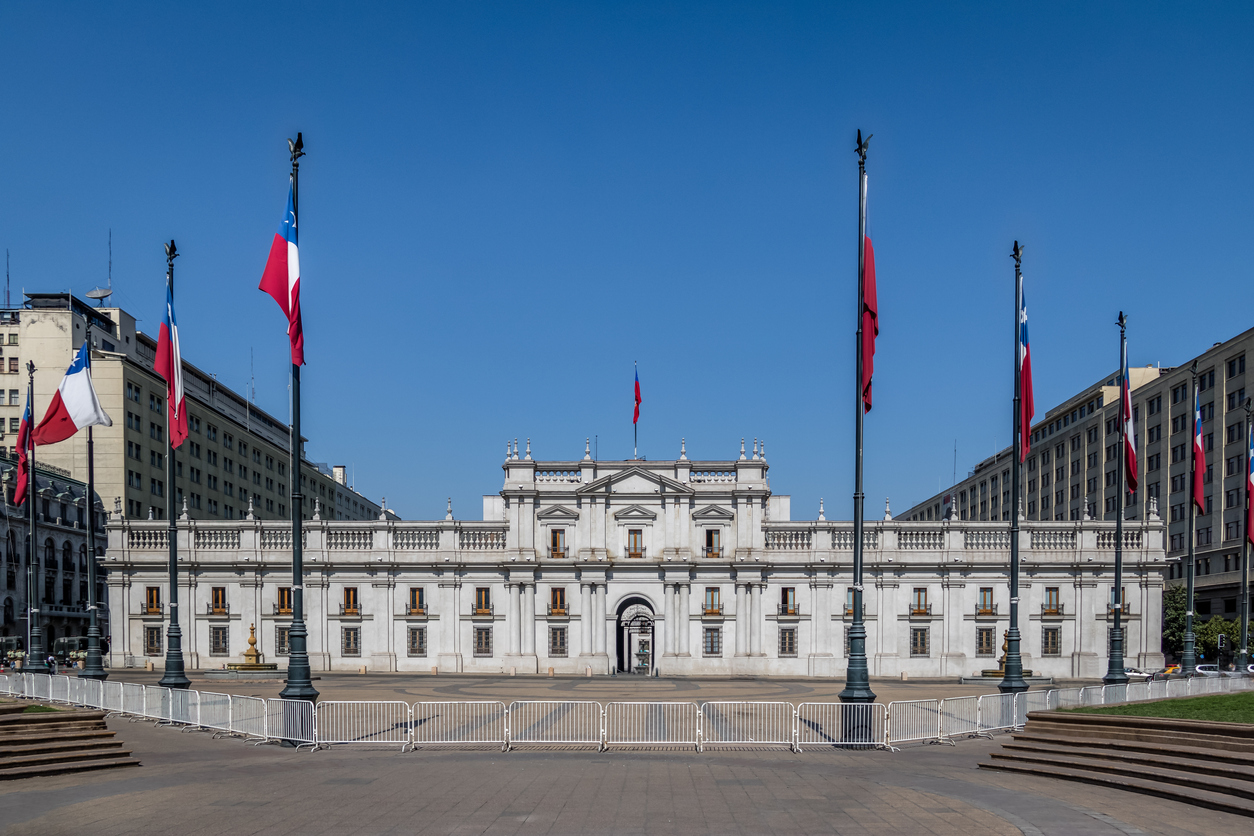

Chile’s recent political shift to the left may have massive consequences for the mining industry, and its parliament is in the process of ratifying new tax legislation that may impact the global mineral supply. The proposed law is a ‘Mining Royalties Law’ that would lead to a massive tax hike on the sale of copper and lithium.
According to some estimates, Chilean mining companies could see an 80% increase in tax rates and a subsequent 50% drop in profit margins if copper prices remain constant. Chile is also the leading copper producer and 2nd largest lithium producer in the world, so this decision will have massive impacts on global copper supplies and prices as well. According to a recent study in 2020, it accounts for over 28% of global copper production. As such, this new legislation could have massive impacts on the price of copper globally.
Why is this legislation coming into play?
Since the mass protests of 2019, economic inequality has been at the top of the agenda for many domestic politicians. This was furthered by the impetus for economic stimulation, and the current left-leaning opposition party has been particularly keen on initiatives to help Chileans recover from the pandemic. The rise in copper prices has been of particular concern to many parties in Chile, and as such, forced the hand of many of the members of Chile’s congress to consider heavily taxing the mining industry. Miners in Chile currently pay a flat tax rate regardless of the price of copper. However, the new legislation would change that and perhaps increase the tax rate based on the current global price of copper.
The bill was recently approved by the Camara Baja (Lower house_ of Chile’s National Congress in May. According to Juan Carlos Jobet, the current Minister of Mines and Energy, “companies would pay up to 75% in royalties and taxes on sales exceeding 12,000t/y of copper and 50,000t/y of lithium.” The upper house is still debating the bill and should be approved shortly. If passed, these changes could have permanent consequences for the domestic mining industry since it aims to change the constitutional framework that outlines the government’s mining sector policy.
Why is this significant for the copper industry?
Chile’s mining industry has been one of the country’s major sectors for quite some time now, accounting for 14% of its GDP. Both copper and lithium are key minerals necessary for a global energy transition away from fossil fuels, and as such have seen massive stock price hikes worldwide. As the global economy begins to open up again following the COVID-19 pandemic, copper demand has surged as production has gone down. Global Copper supply is also projected to remain somewhat constrained because of few mass mining projects and increasingly strict regulations from domestic authorities. The passing of this new legislation in Chile may only increase the price of copper and will affect the prices on a global scale.
However, there is a saving grace for foreign-owned mines in Chile since the new royalties will not apply till roughly 2023. From 2024 onwards, though, new investors would be affected by the royalty regime and may begin to look towards other investment options. An independent industry research firm recently said that:
“There is a clear risk that the amendments could compromise the continued appetite for long-term, large-scale investment in the Chilean copper sector.”
What is the future of this bill?
The short answer is that the future of this bill is still up in the air. The conservative coalition, more likely to oppose the bill, only has 18 out of the 43 seats (42%) in parliament. The bill’s passage only requires a 2/3 majority, and many political onlookers view this as a possibility. However, some critics have claimed the bill is unconstitutional, and this bill does have massive opposition from the Chilean right.
However, as elections are coming up soon in the country and the public appears to be voicing support for restrictionist policies, this legislation could likely be passed in the coming years. If so, many investors may begin to shy away from investing in Chilean mining, and mining production may shift to other regions in the future.
The above references an opinion and is for information purposes only. It is not intended to be investment advice. Seek a licensed professional for investment advice. The author is not an insider or shareholder of any of the companies mentioned above.
If you would like to receive our free newsletter via email, simply enter your email address below & click subscribe.
CONNECT WITH US
Tweets
Tweet with hash tag #miningfeeds or @miningfeeds and your tweets will be displayed across this site.
MOST ACTIVE MINING STOCKS
Daily Gainers
      |
LML.AX | +125.00% |
      |
GCR.AX | +33.33% |
      |
CASA.V | +30.00% |
      |
AHN.AX | +22.22% |
      |
ADD.AX | +22.22% |
      |
AZM.V | +21.98% |
      |
NSE.V | +21.05% |
      |
DYG.V | +18.42% |
      |
AAZ.V | +18.18% |
      |
GLA.AX | +17.65% |













